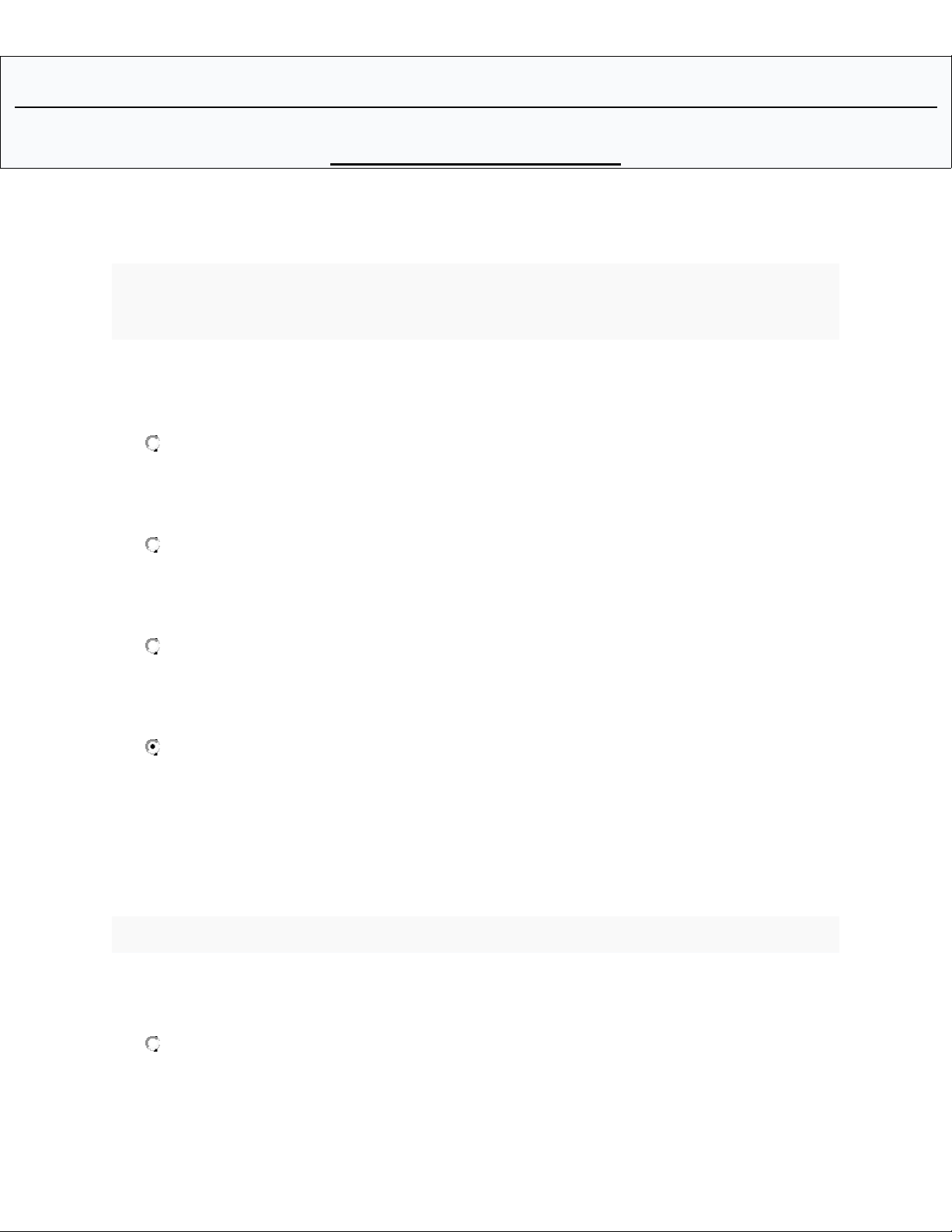
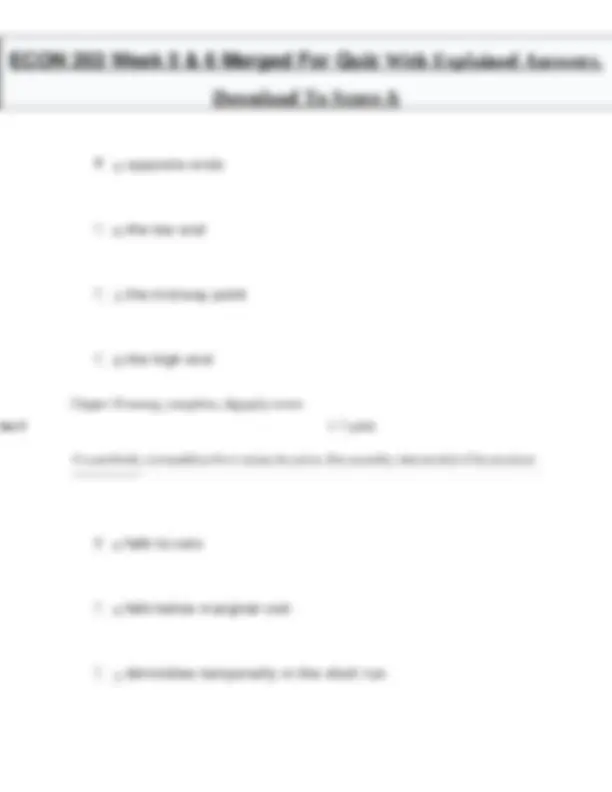
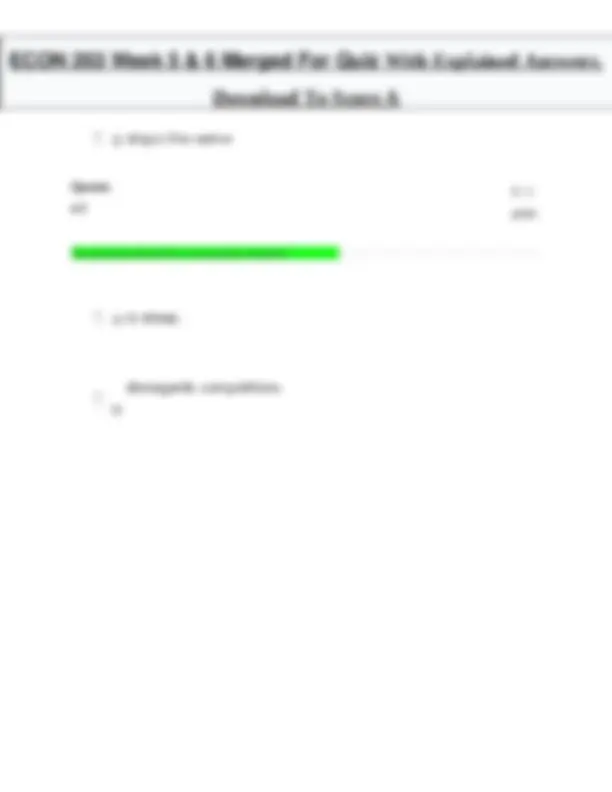
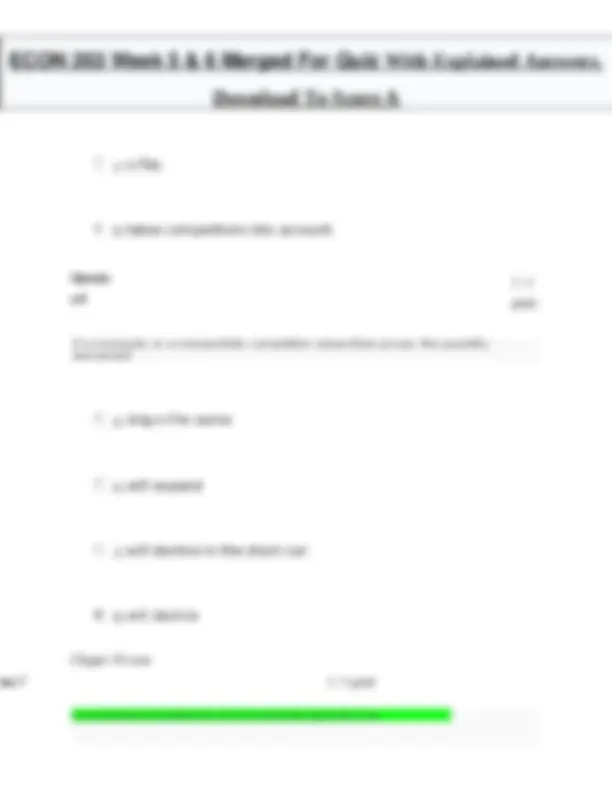
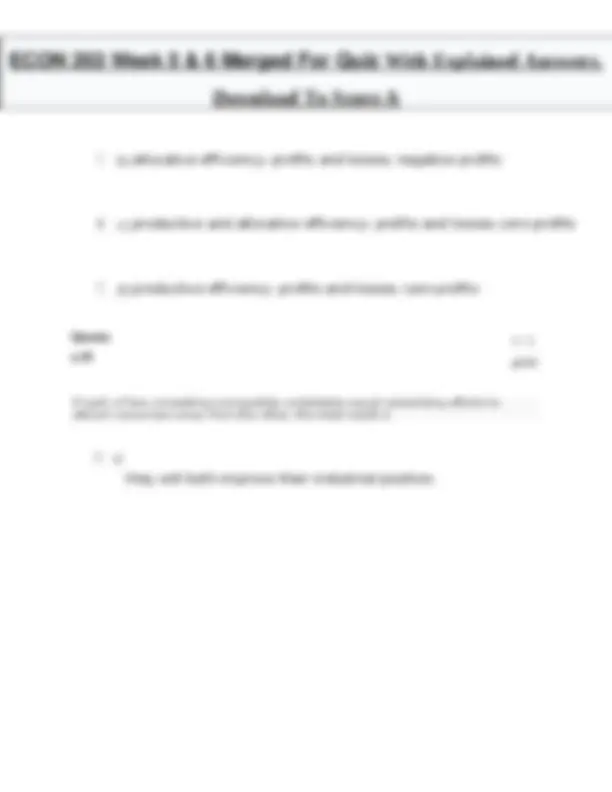
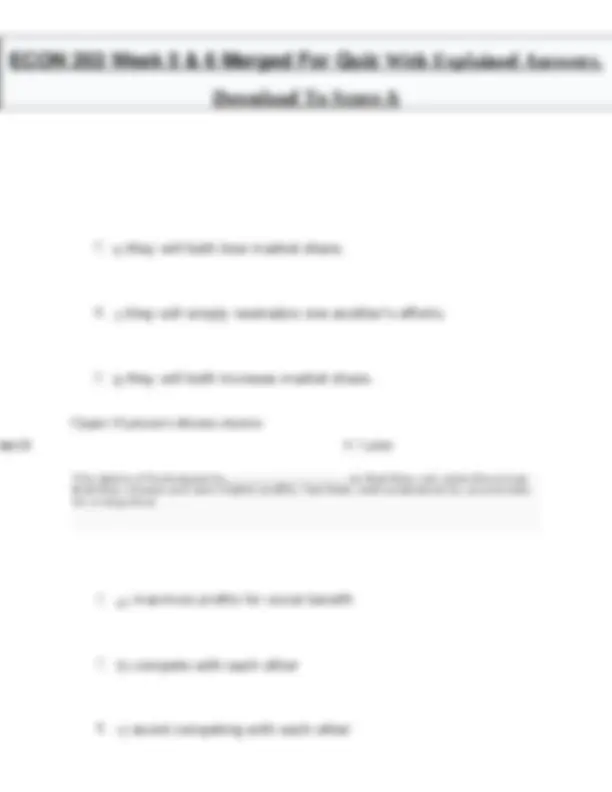
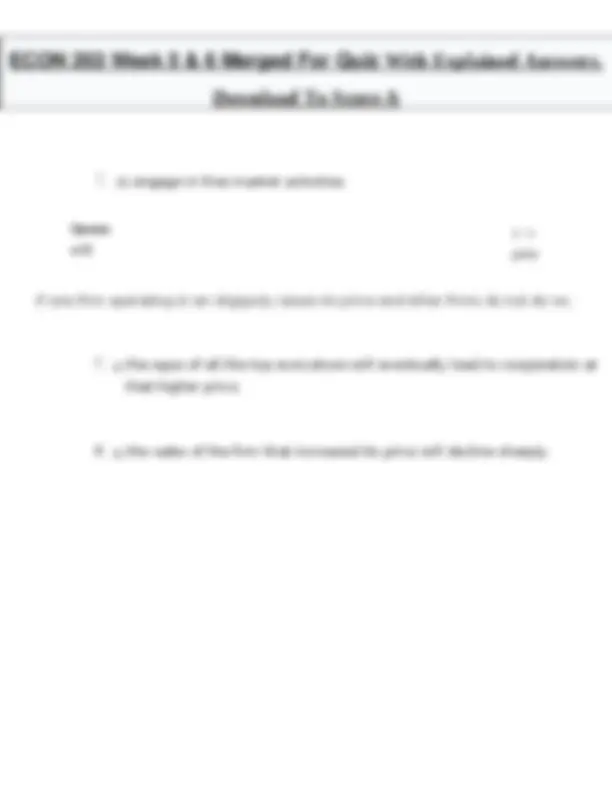

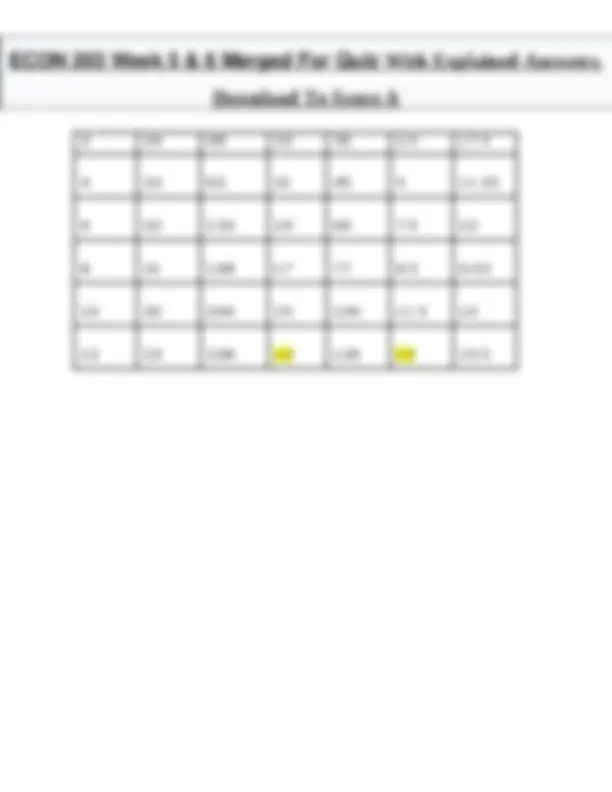
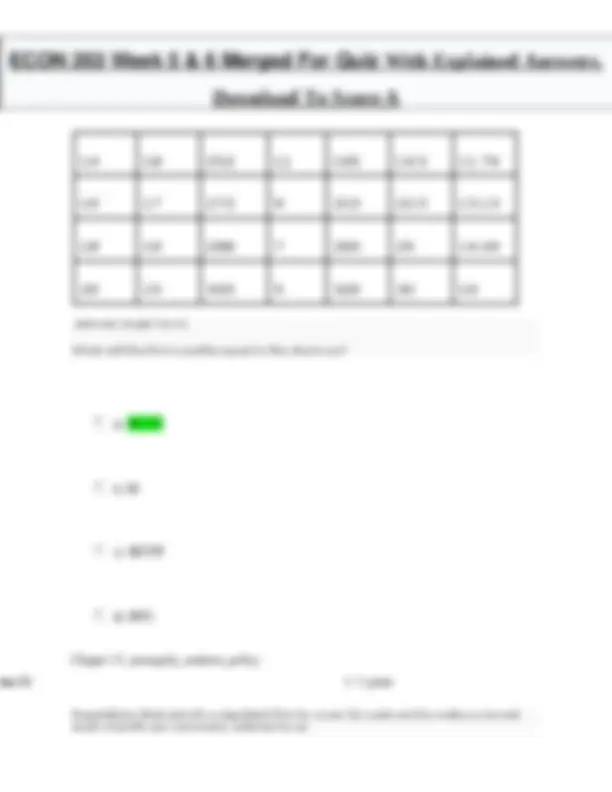
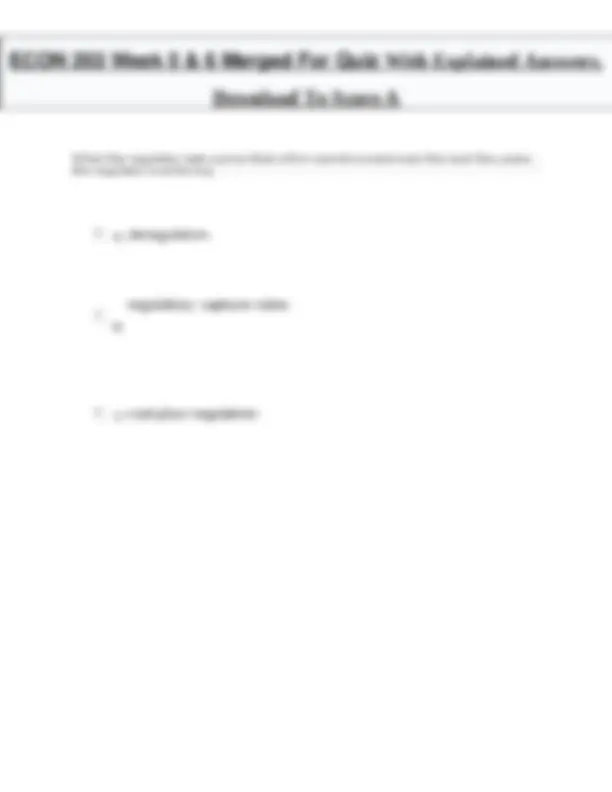
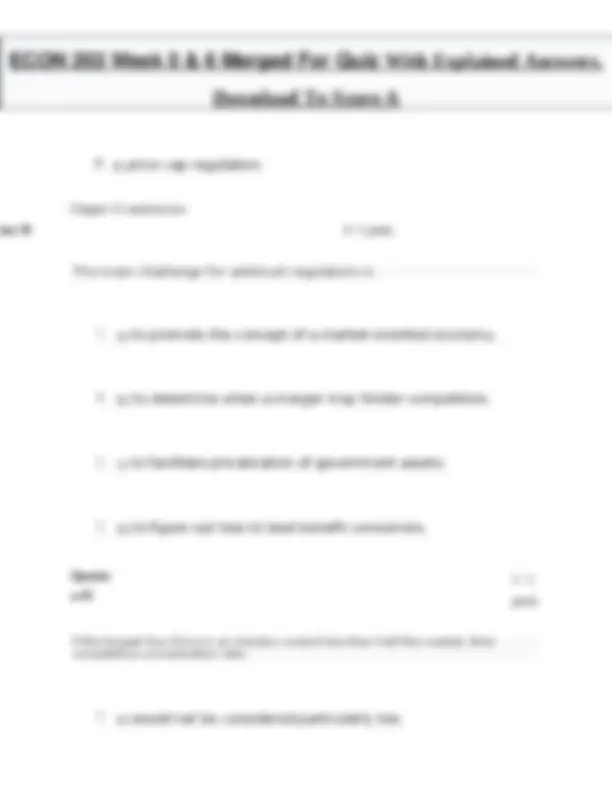
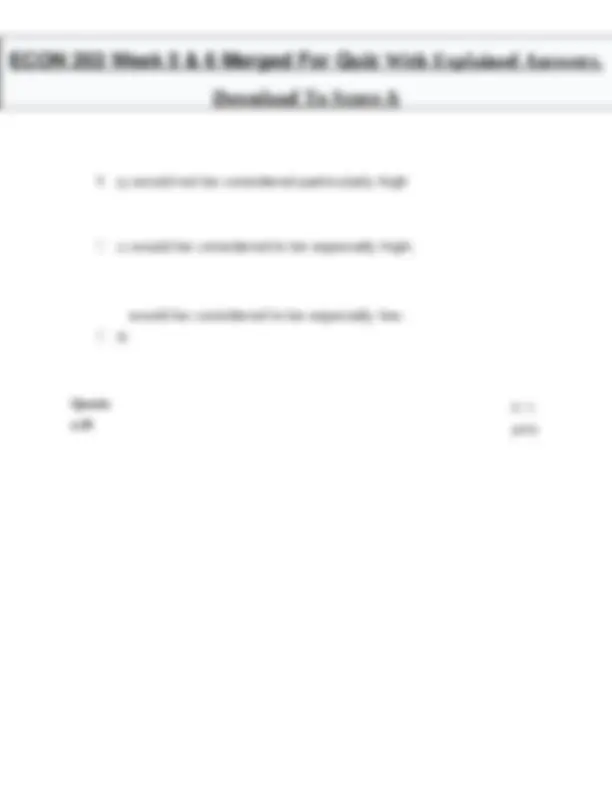
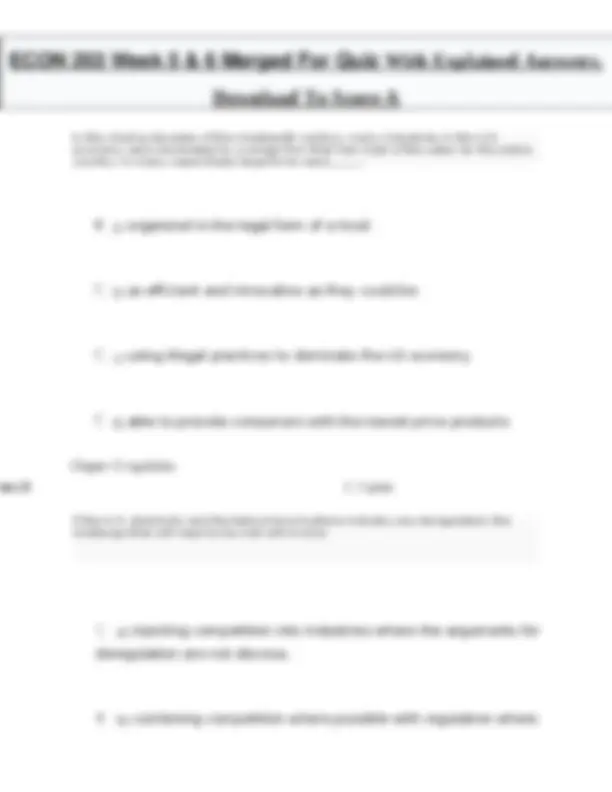
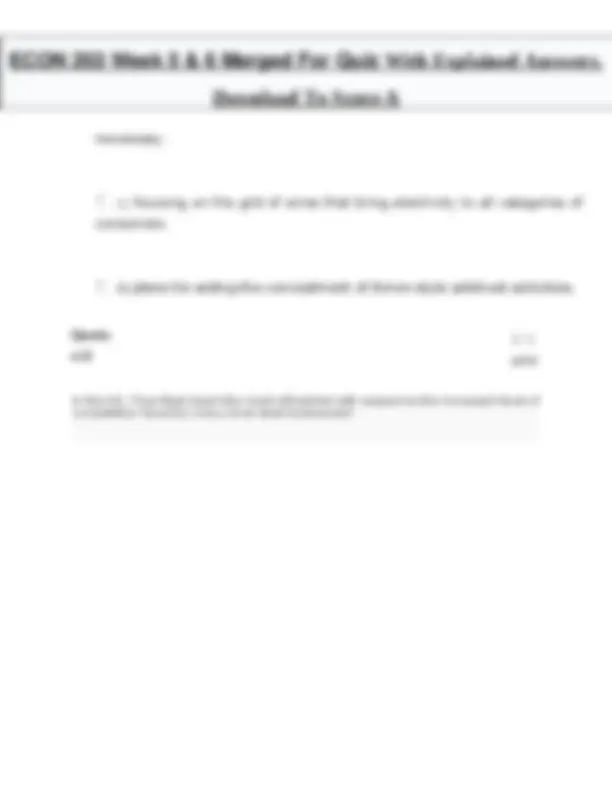
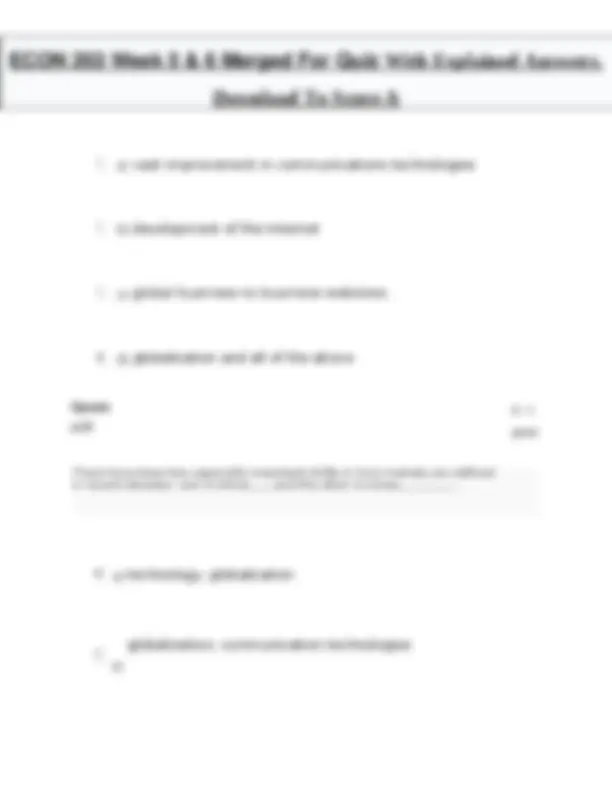
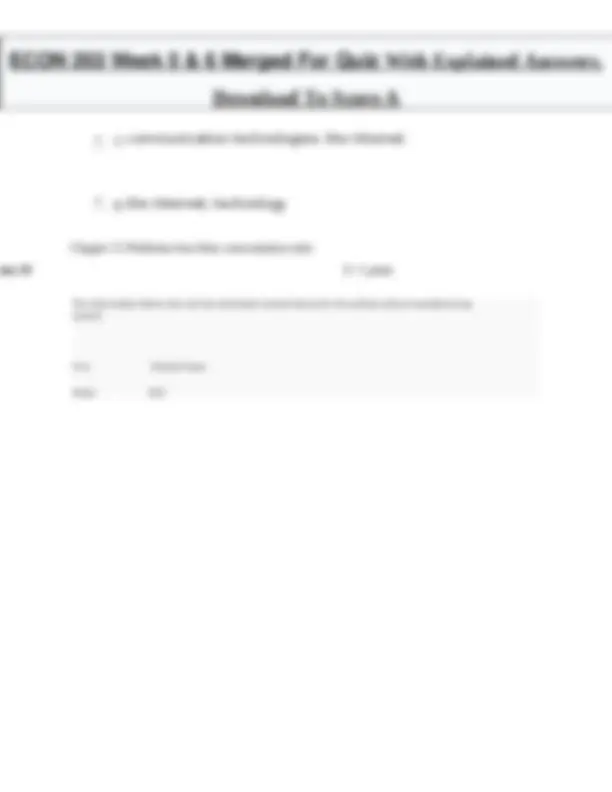
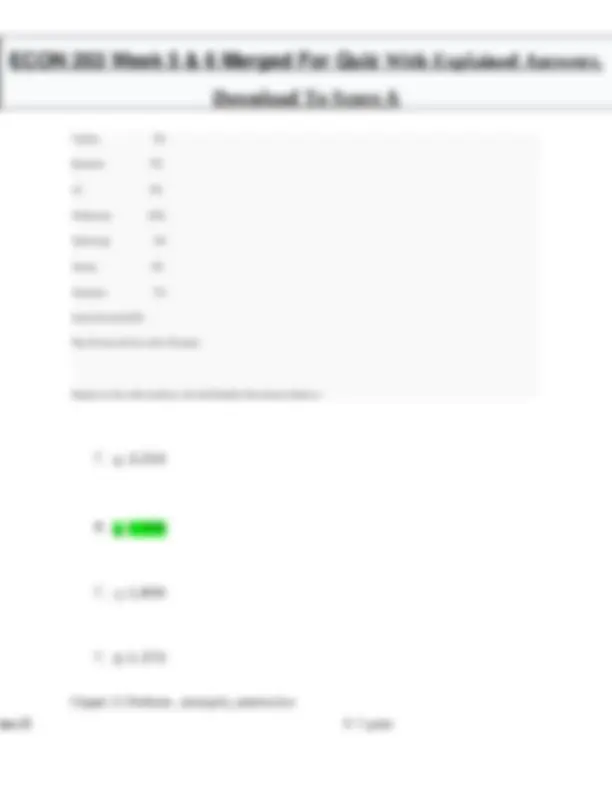

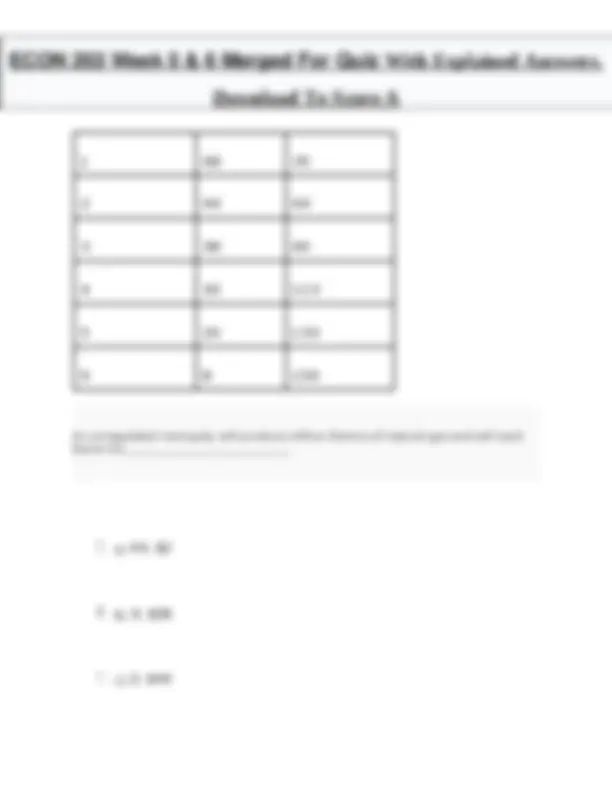
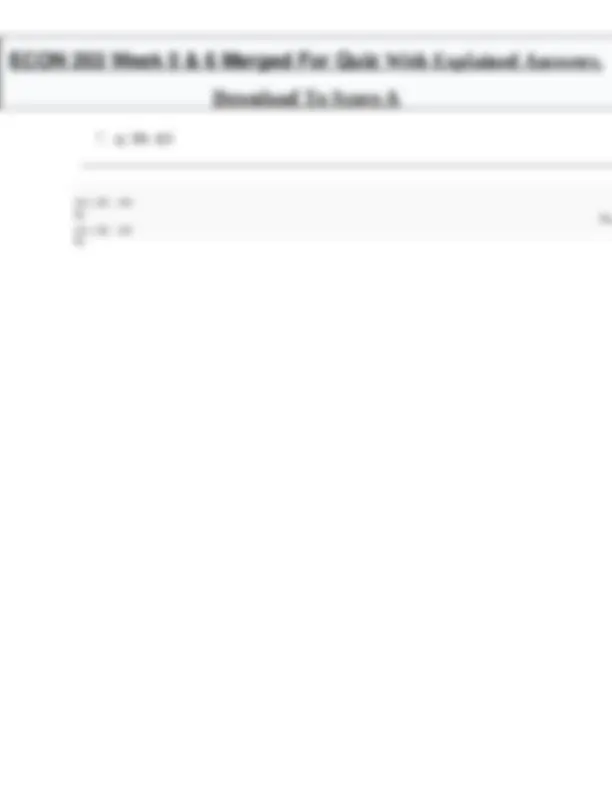
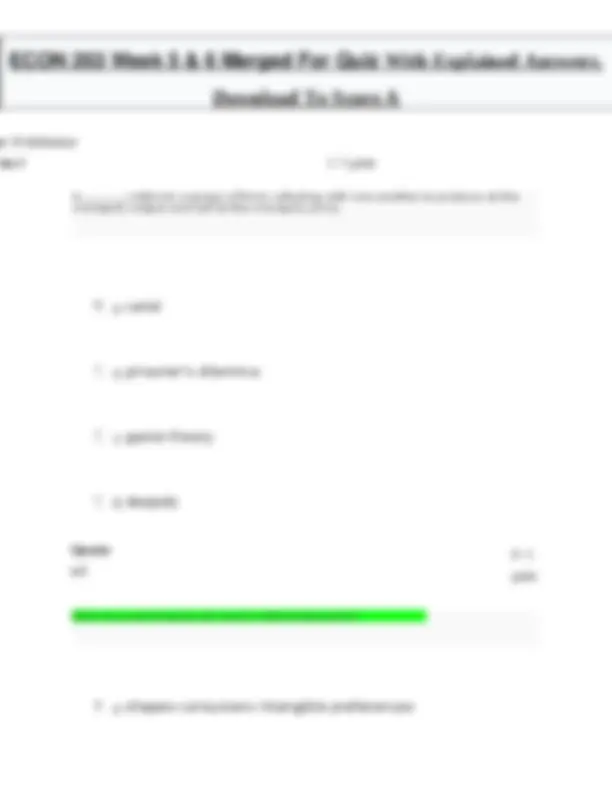
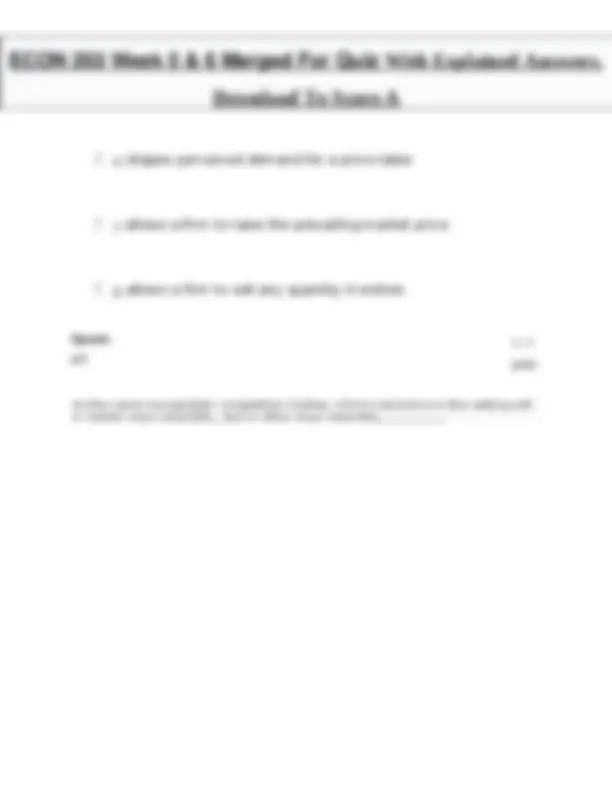
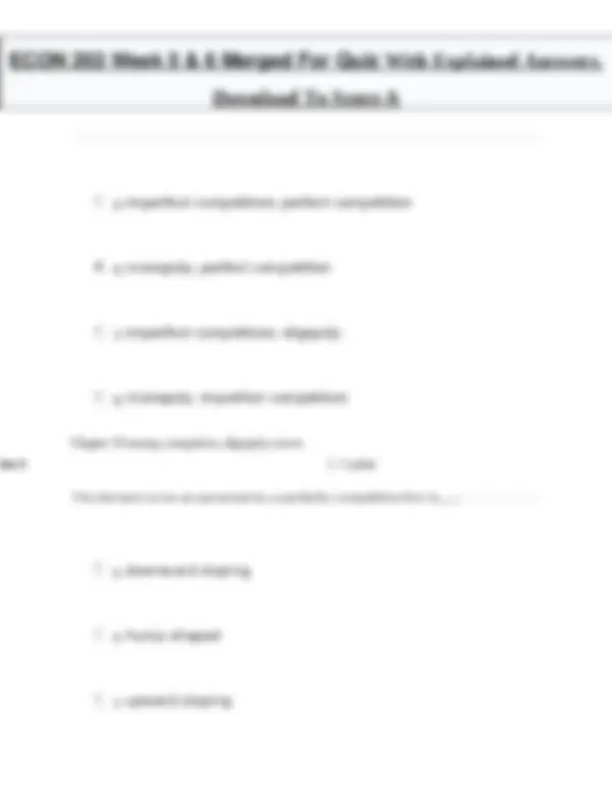
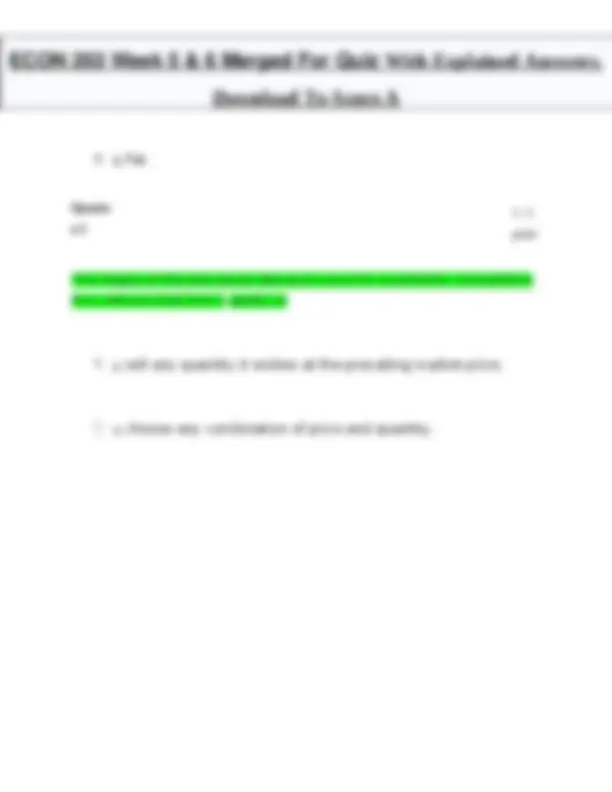
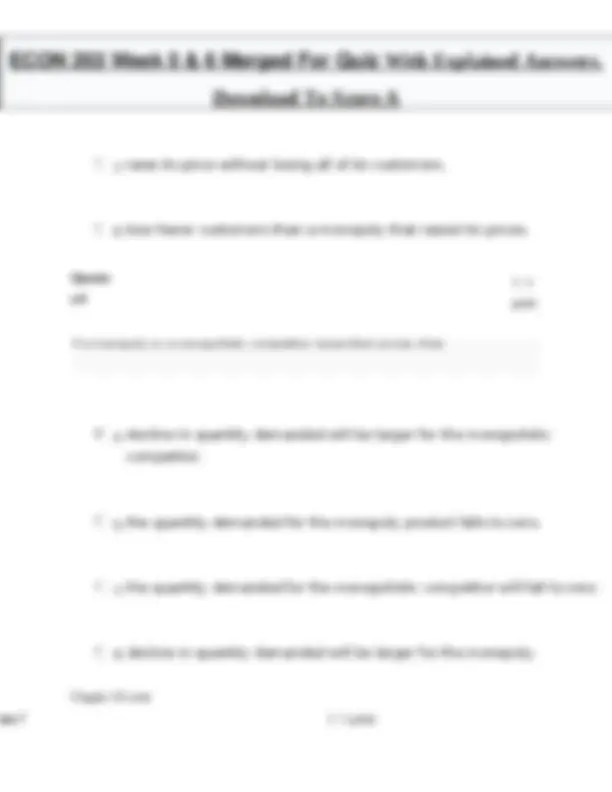
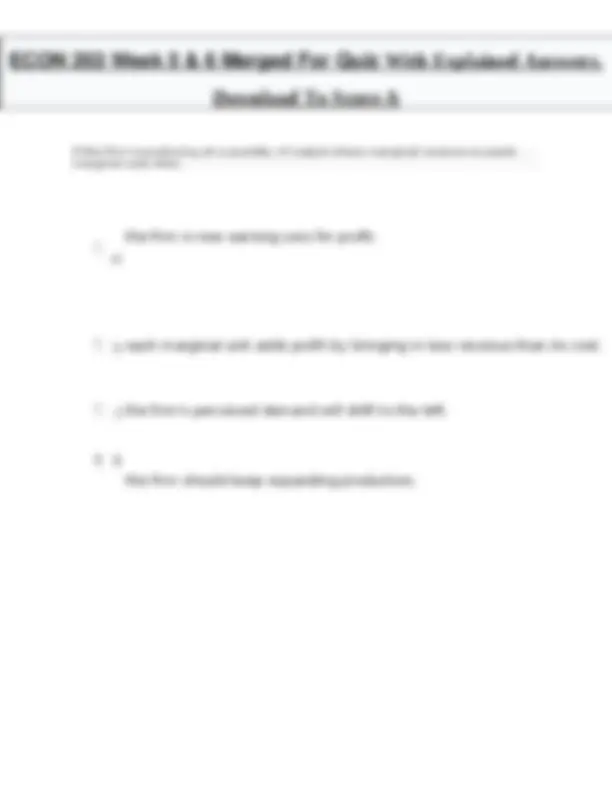
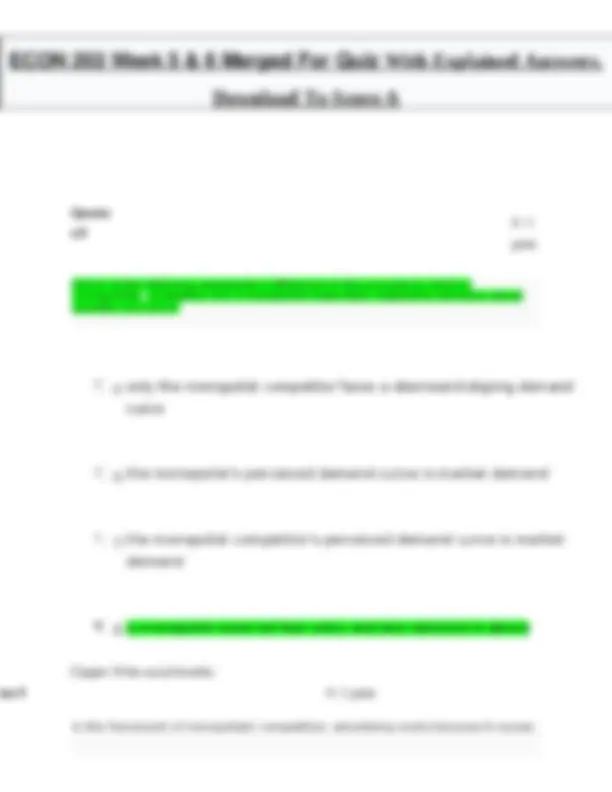
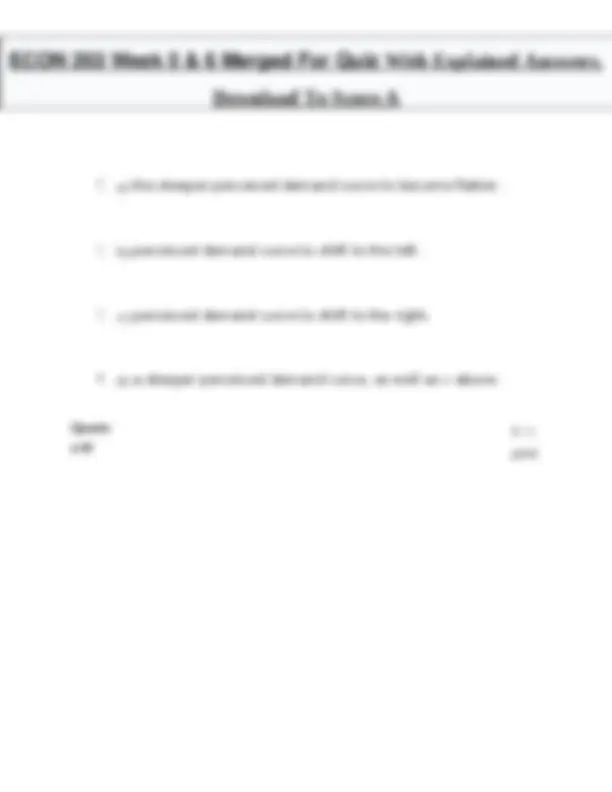
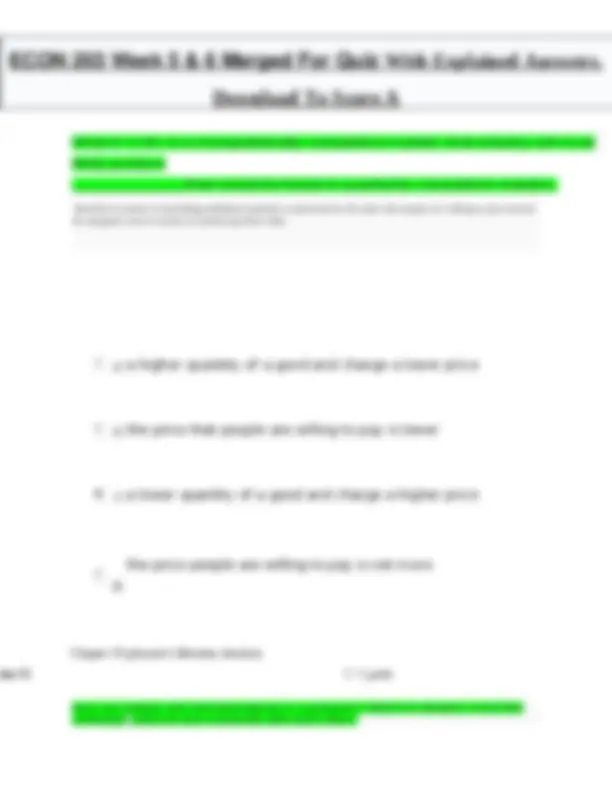
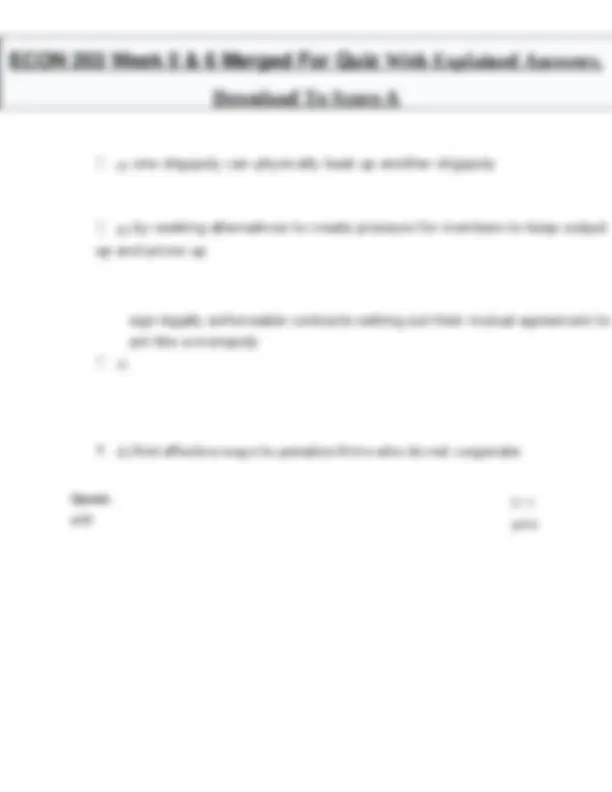
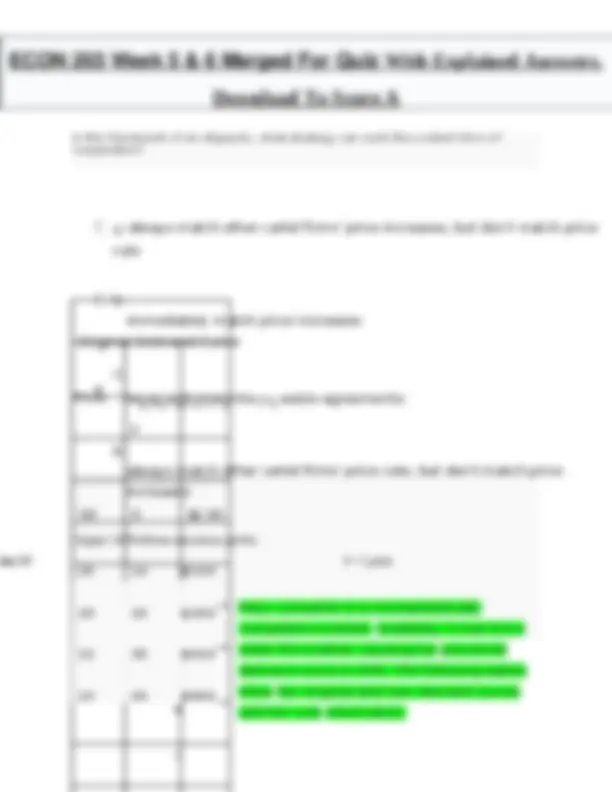
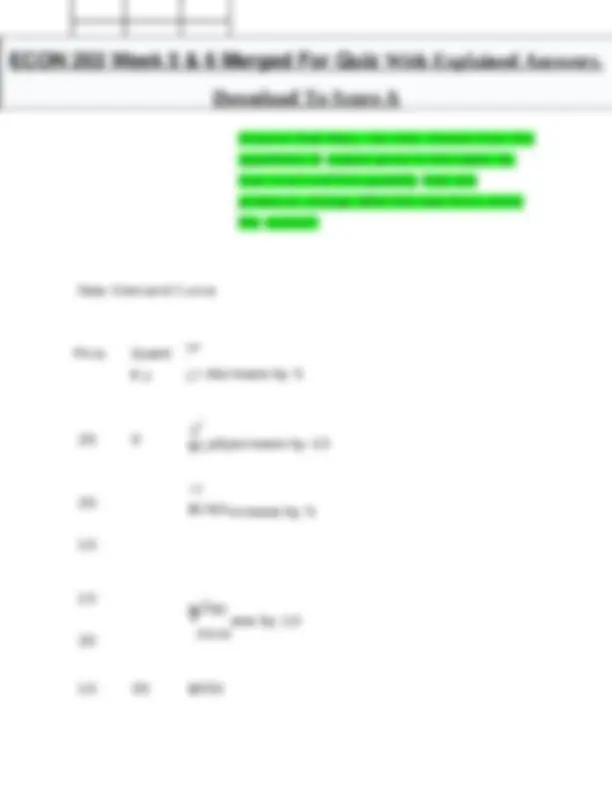
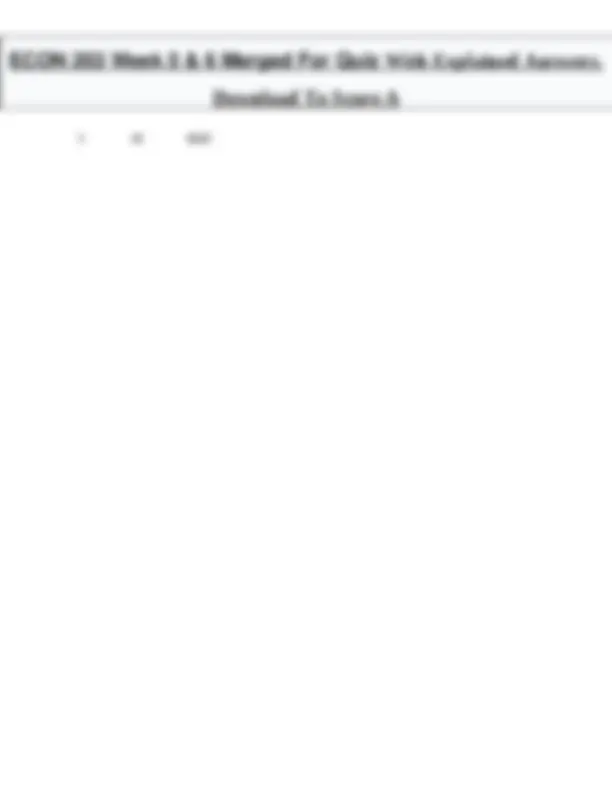
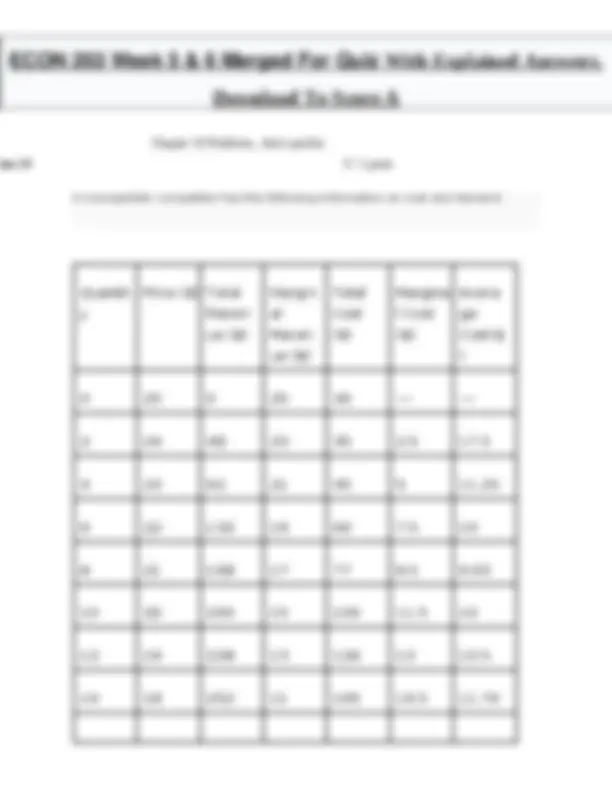
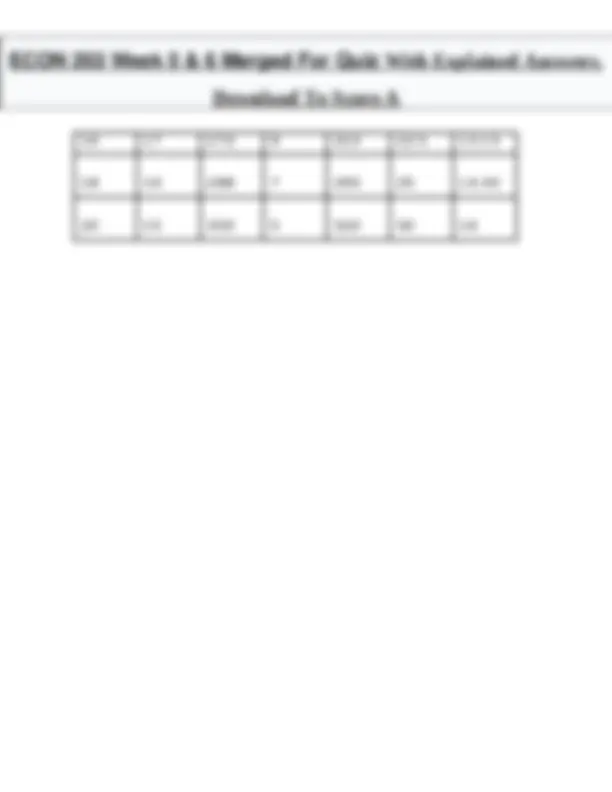
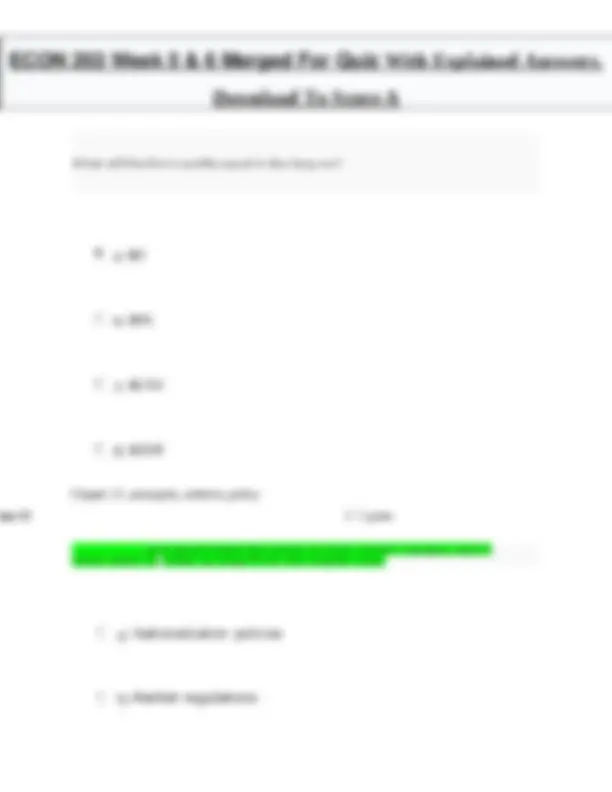
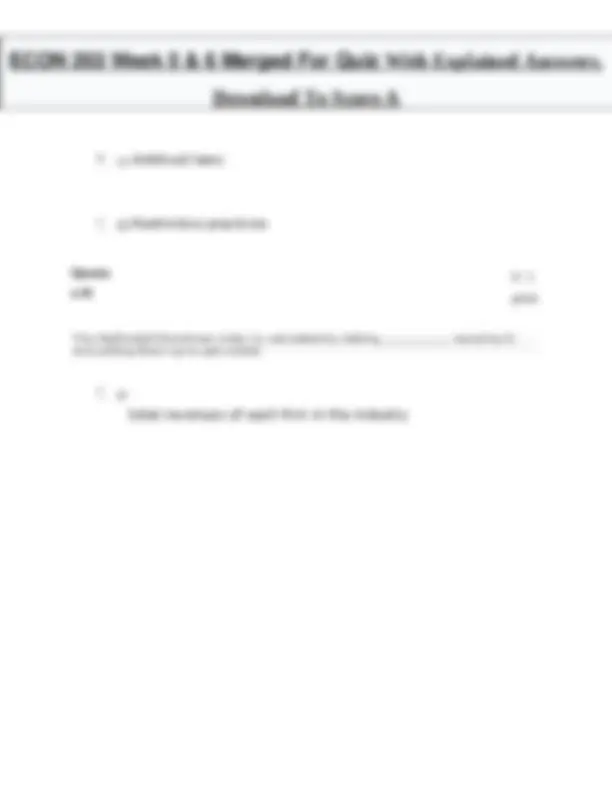
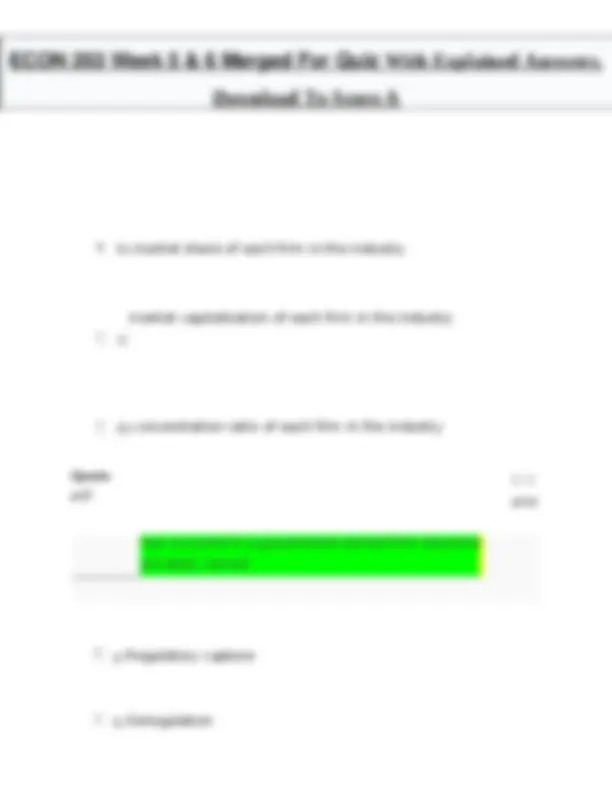
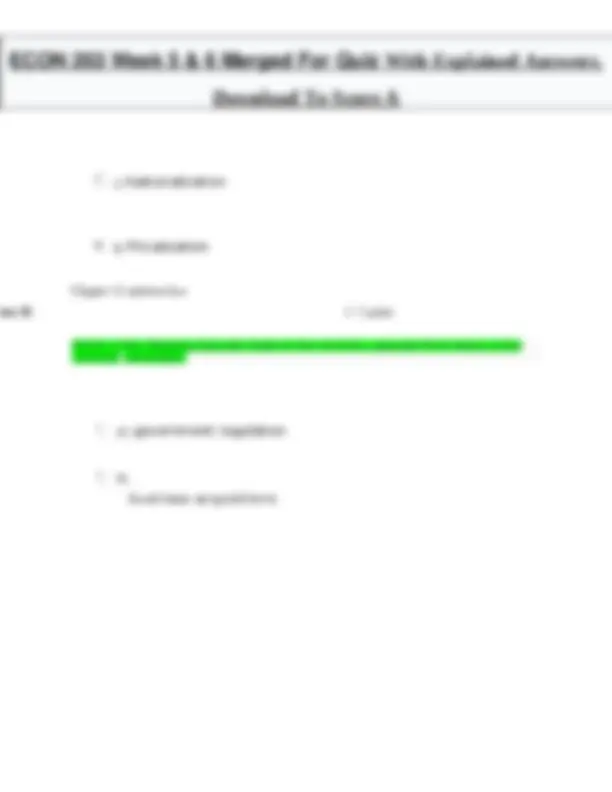

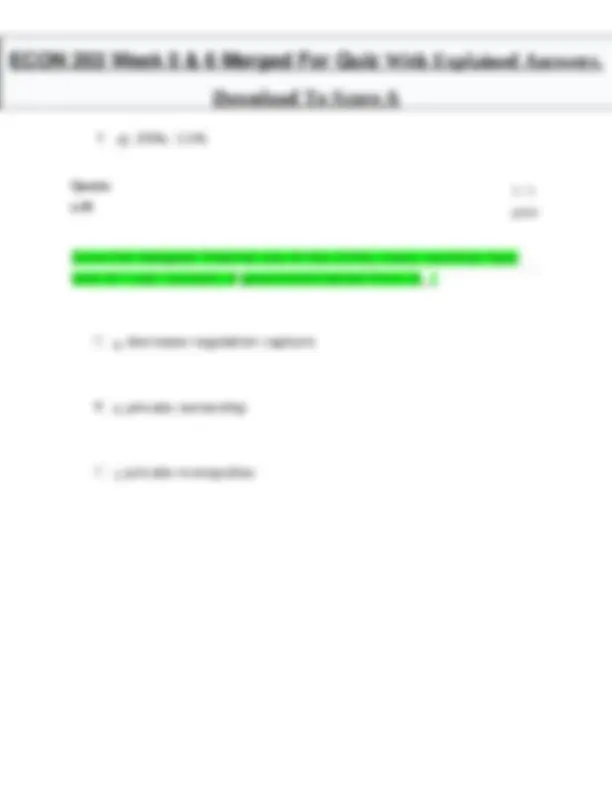
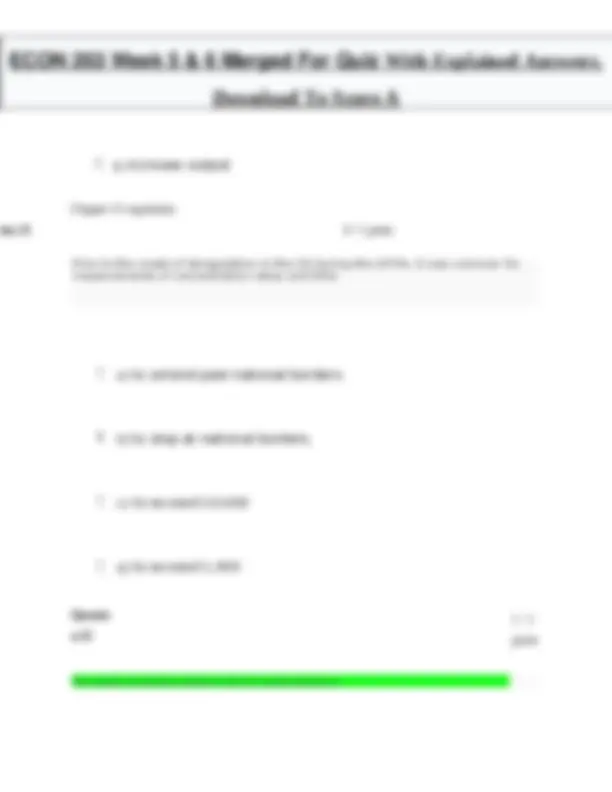
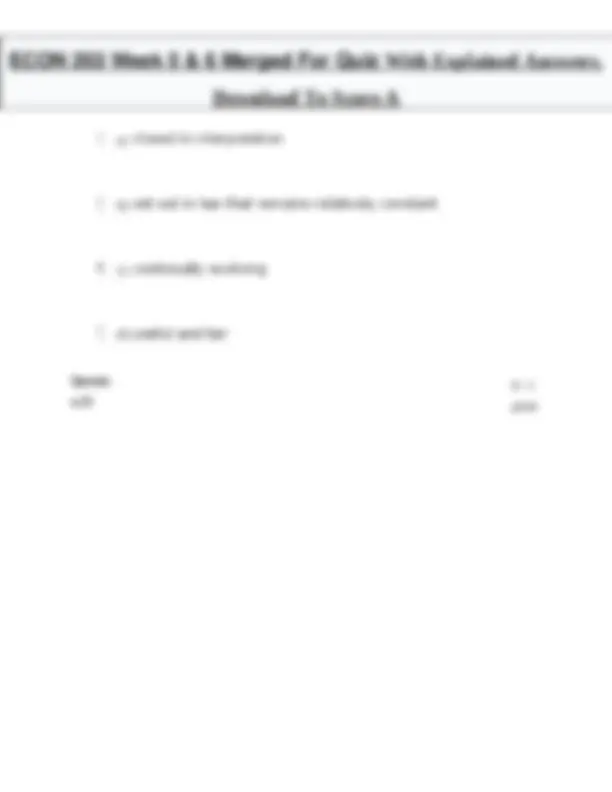
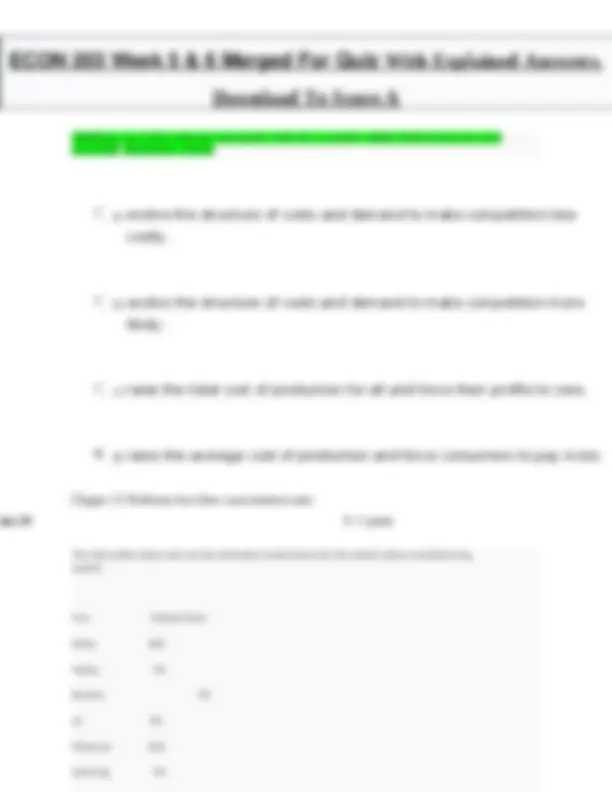
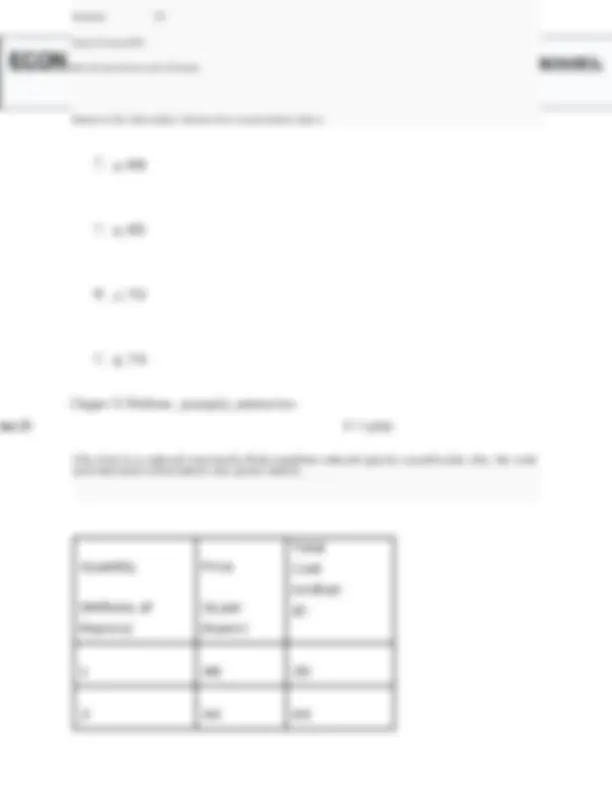
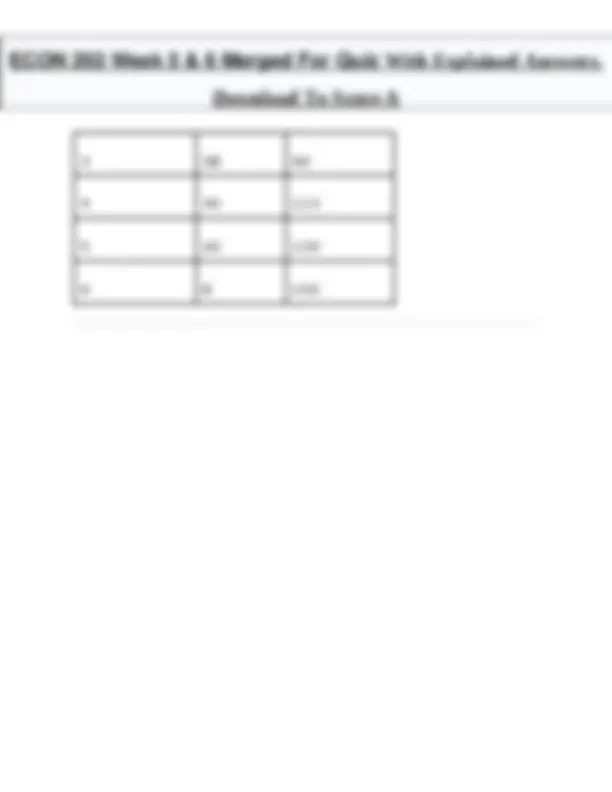
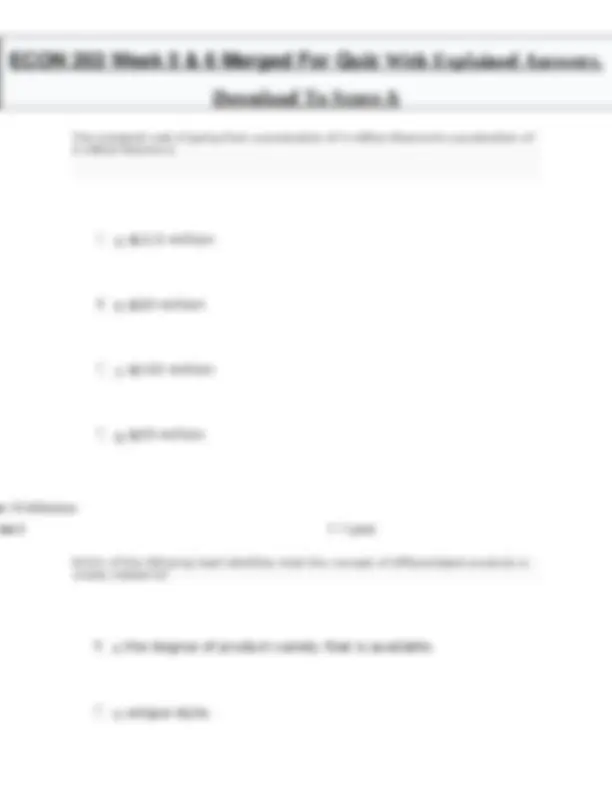
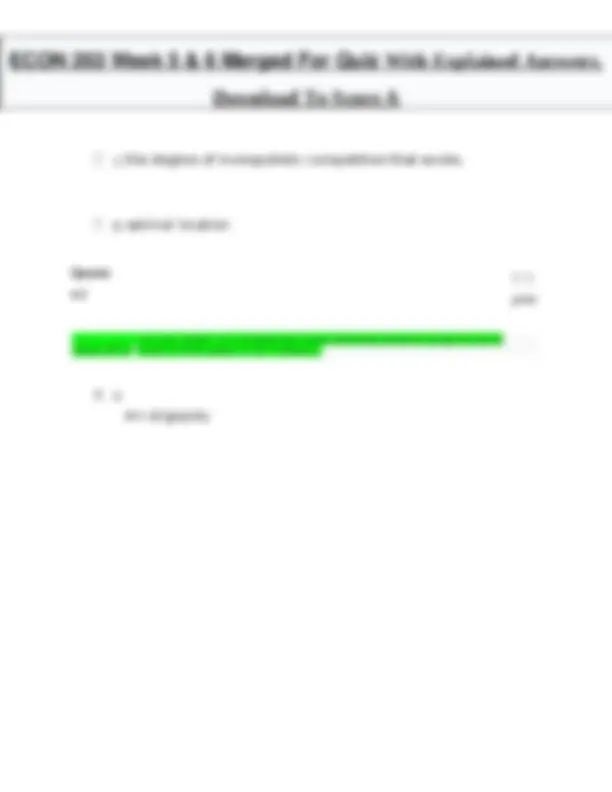
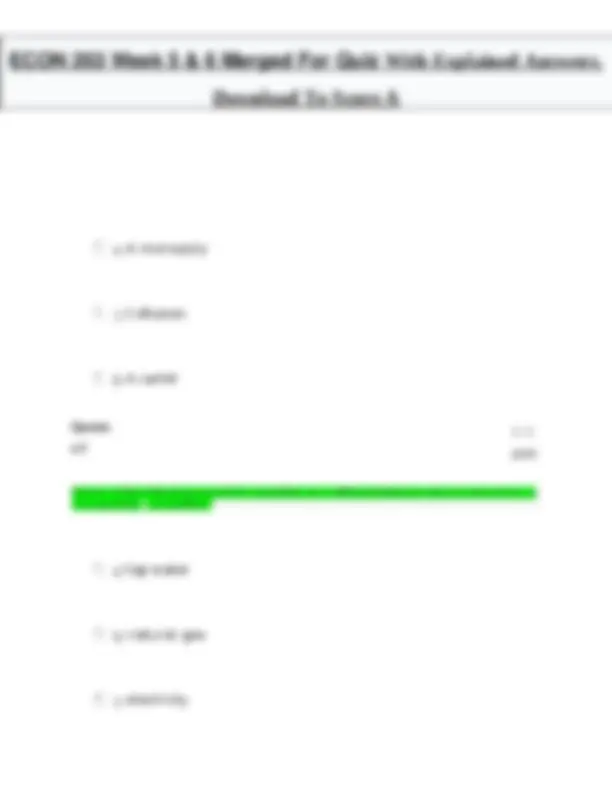
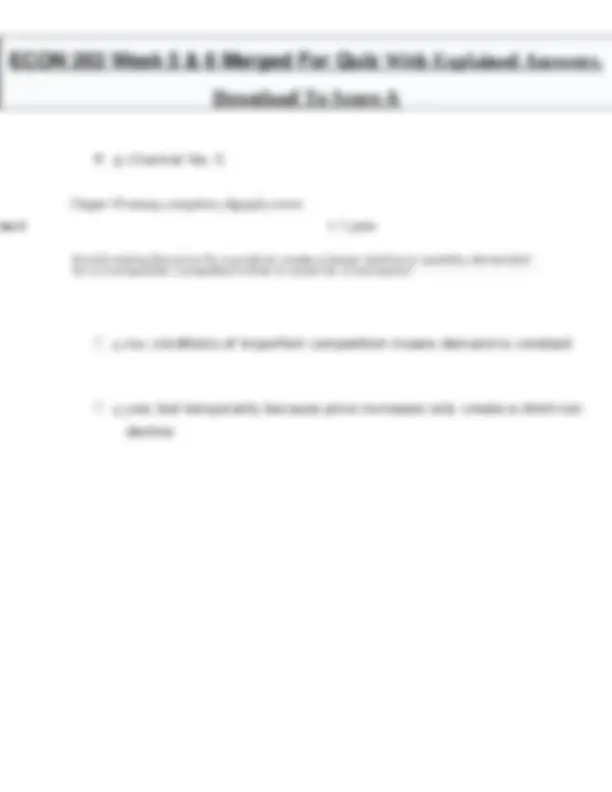
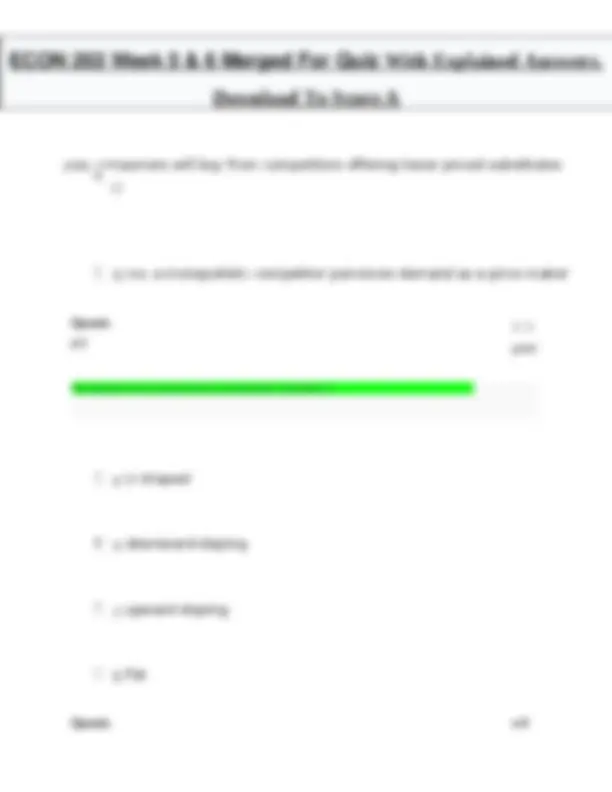
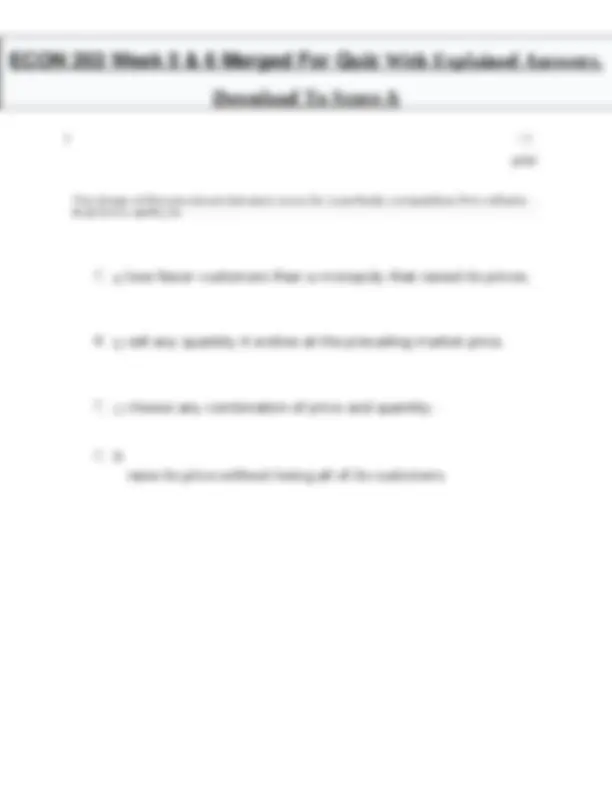
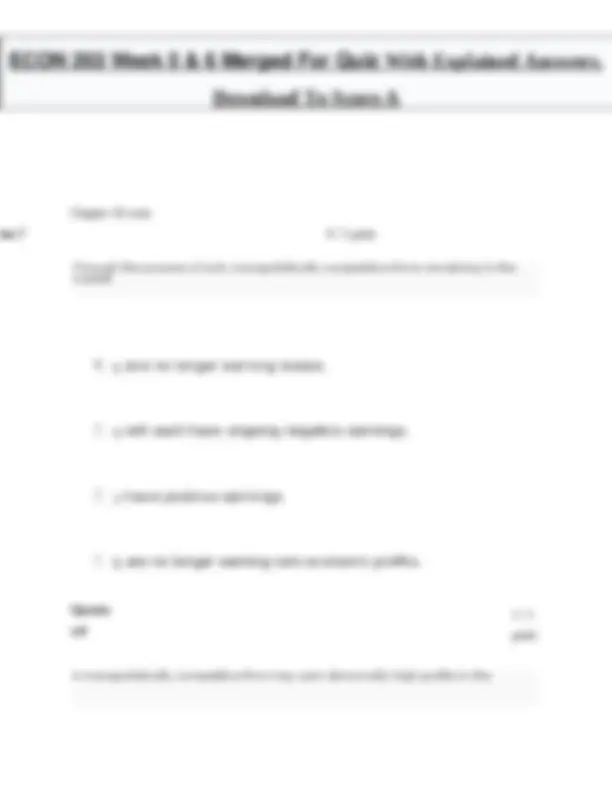
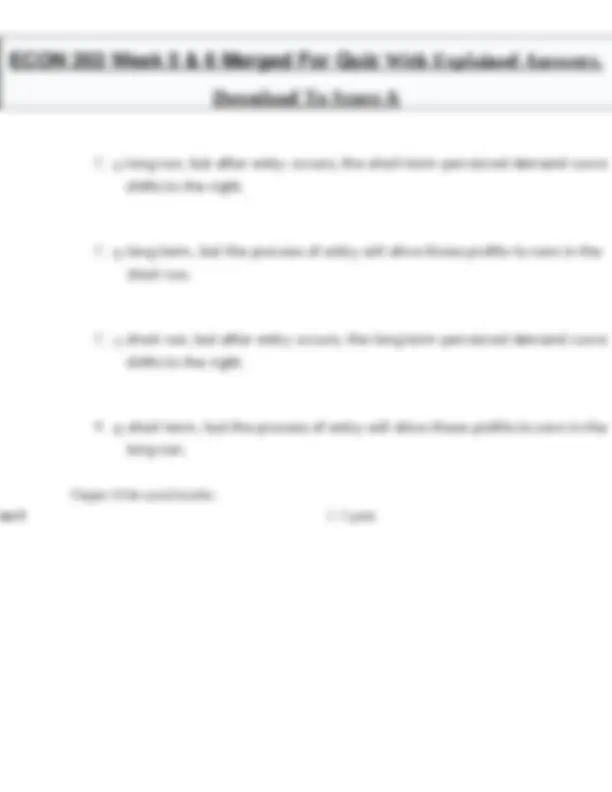
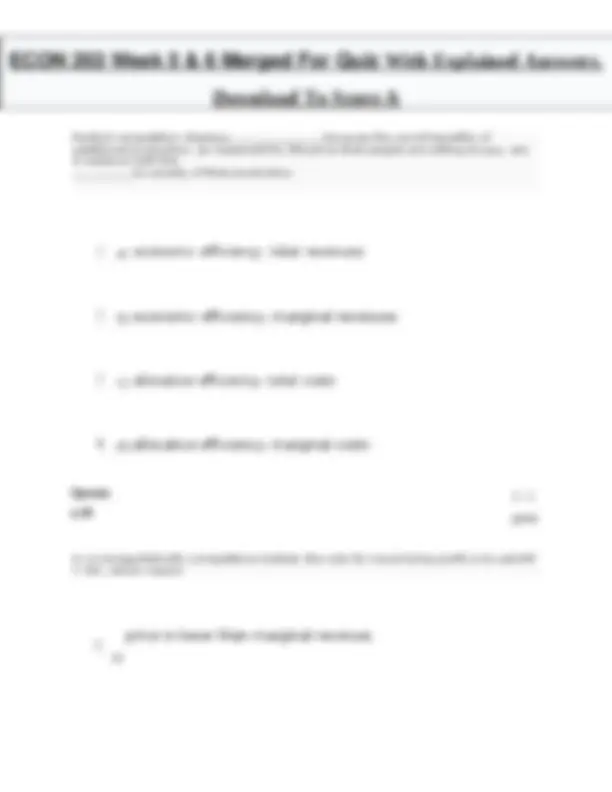
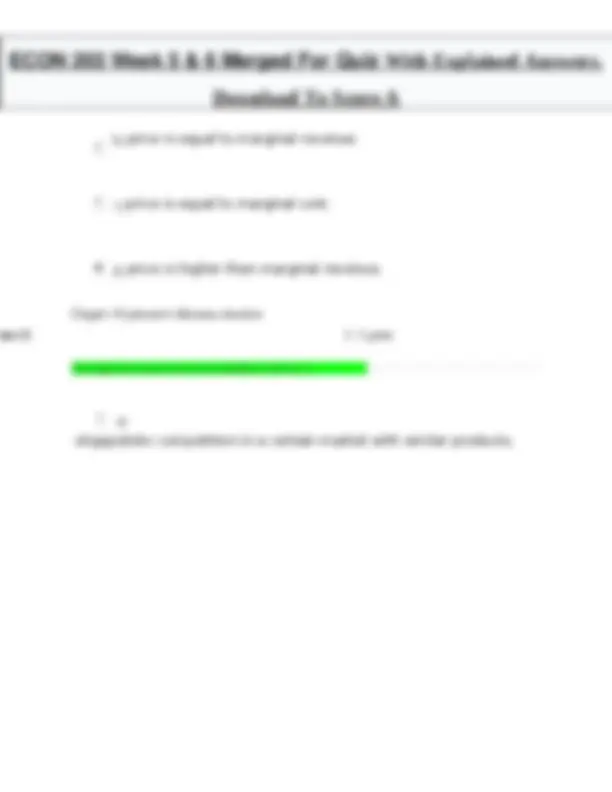
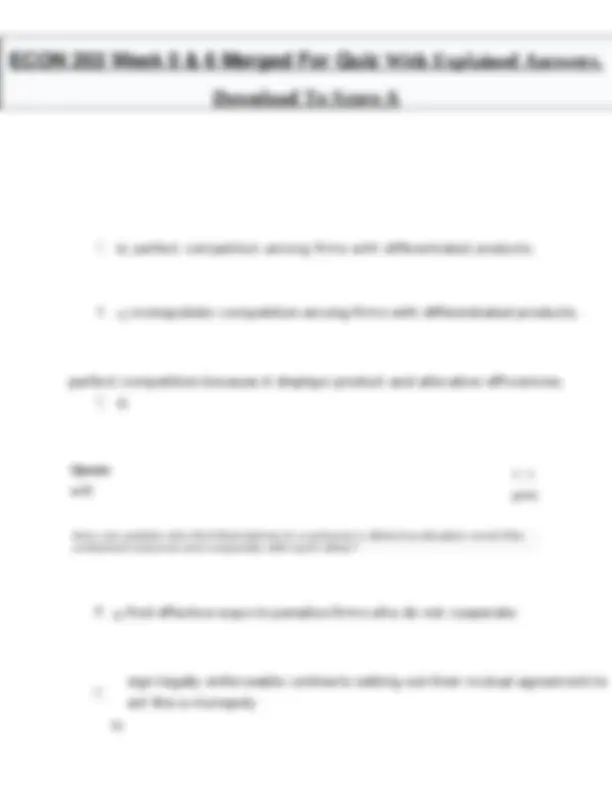
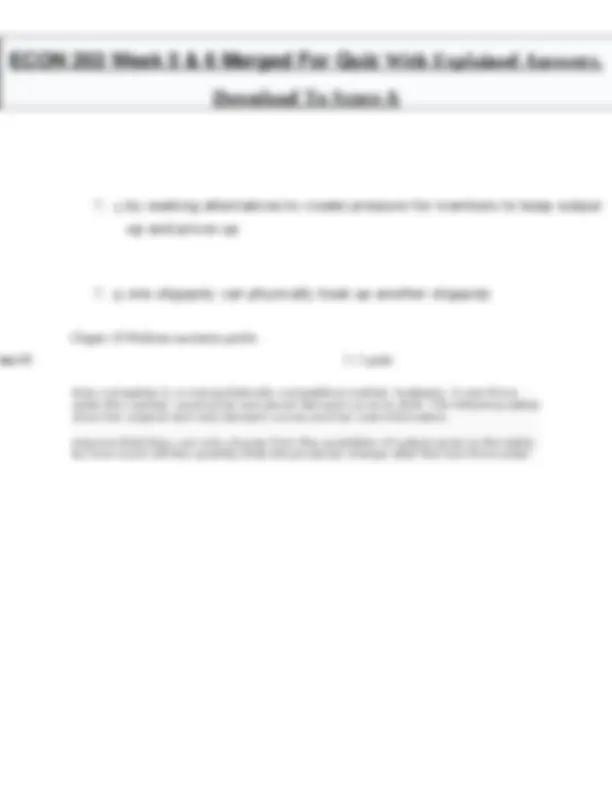
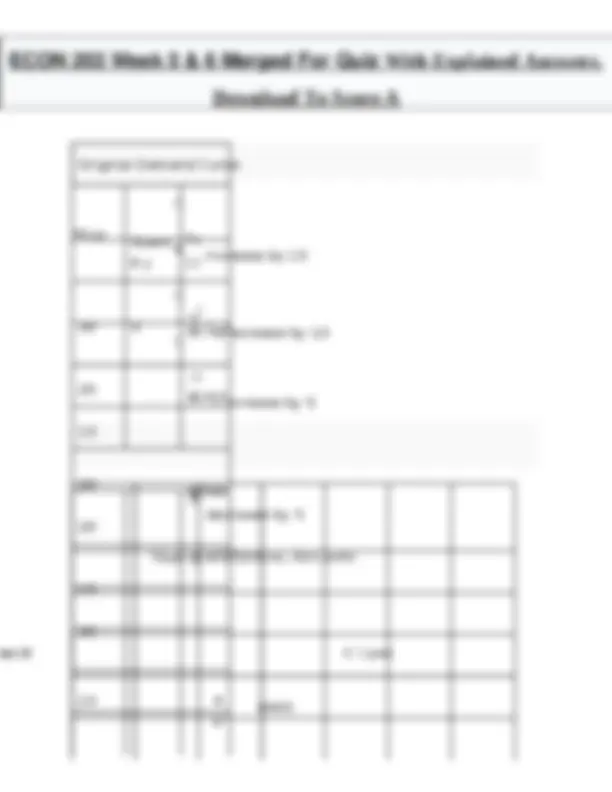
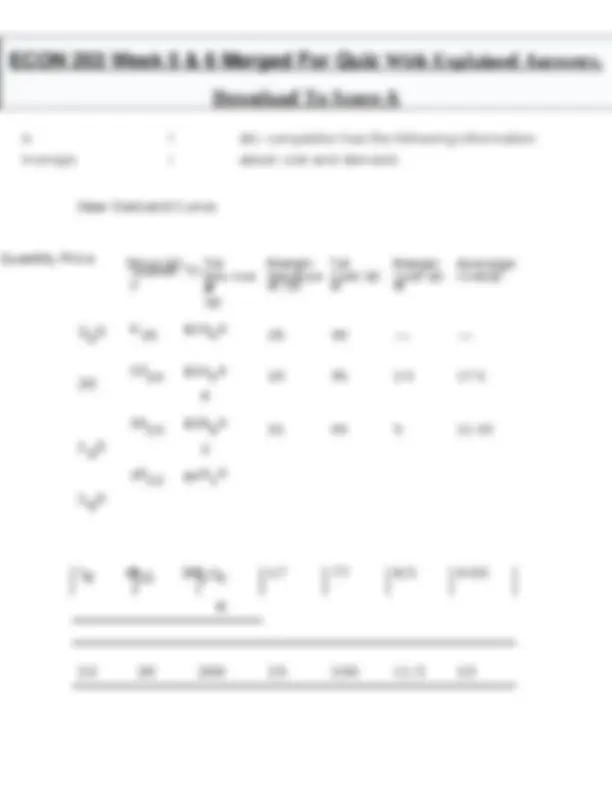
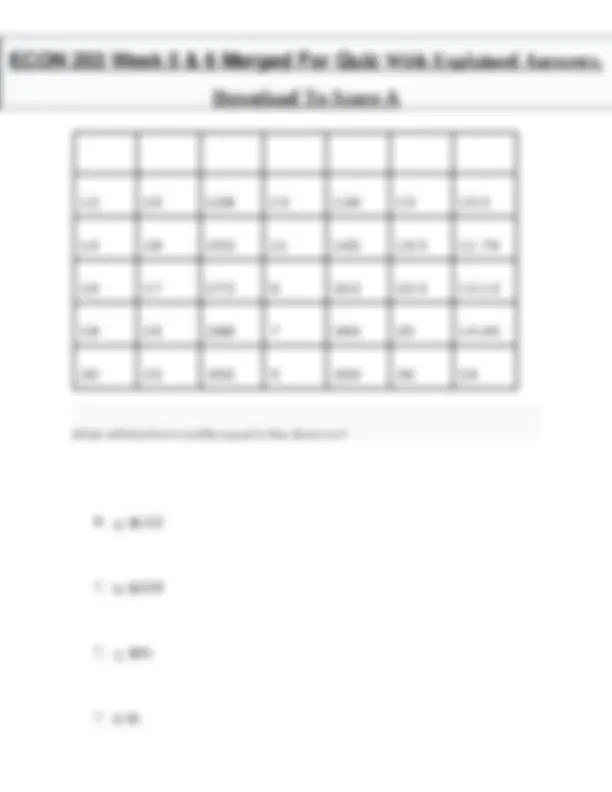
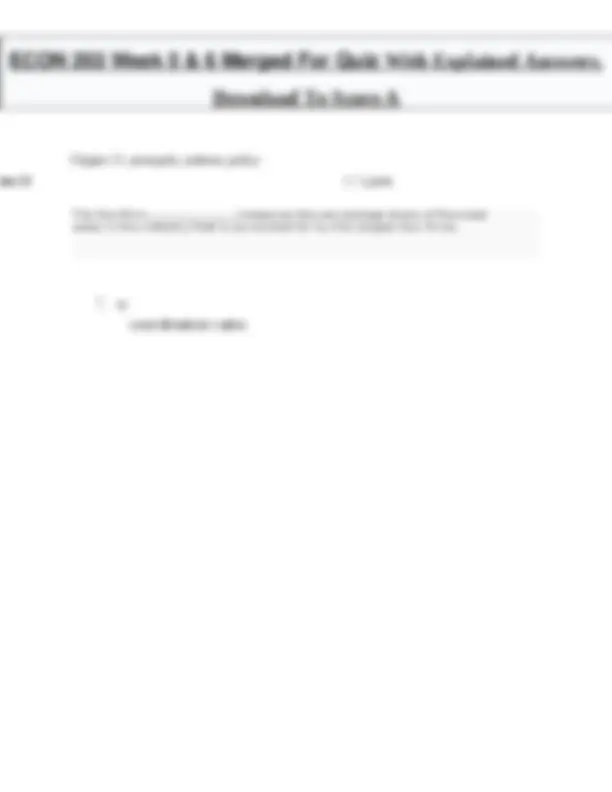
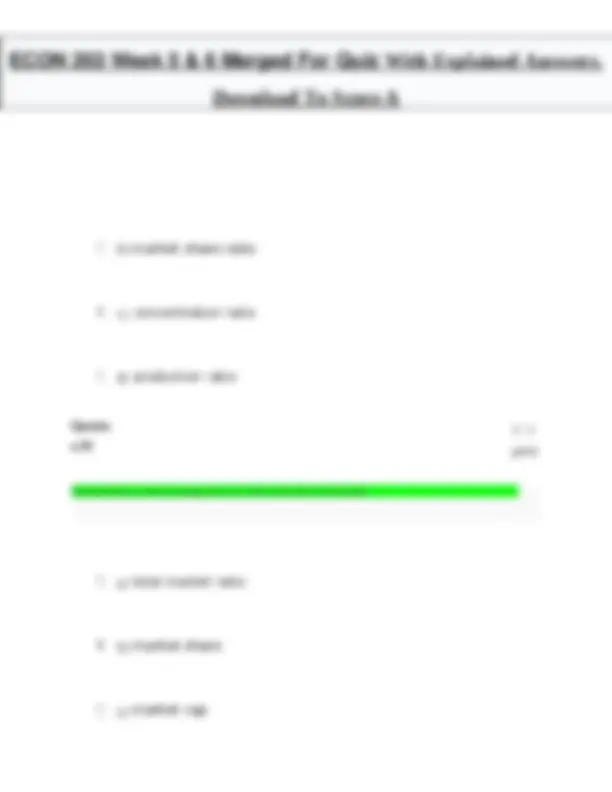
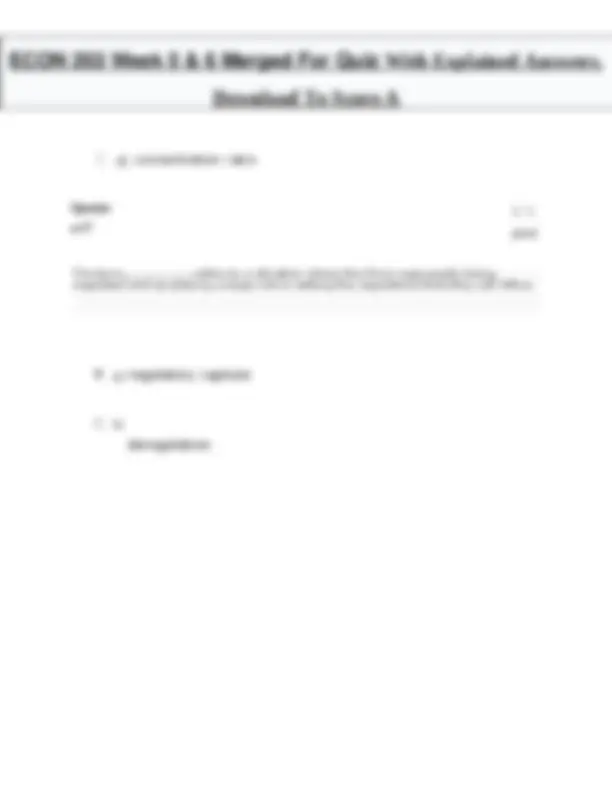
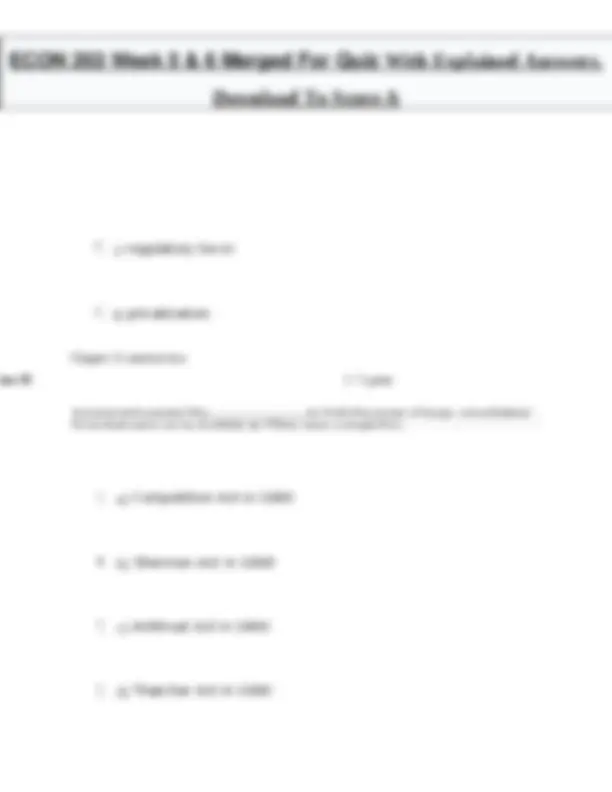
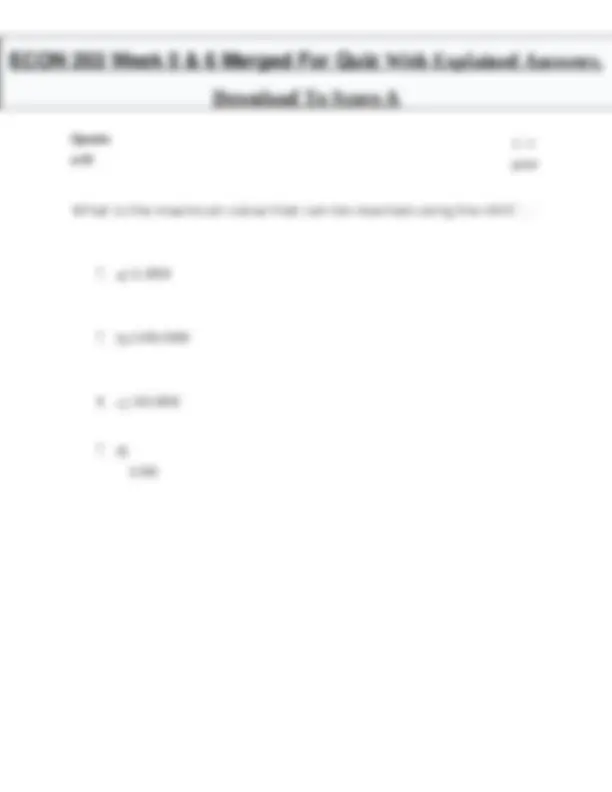
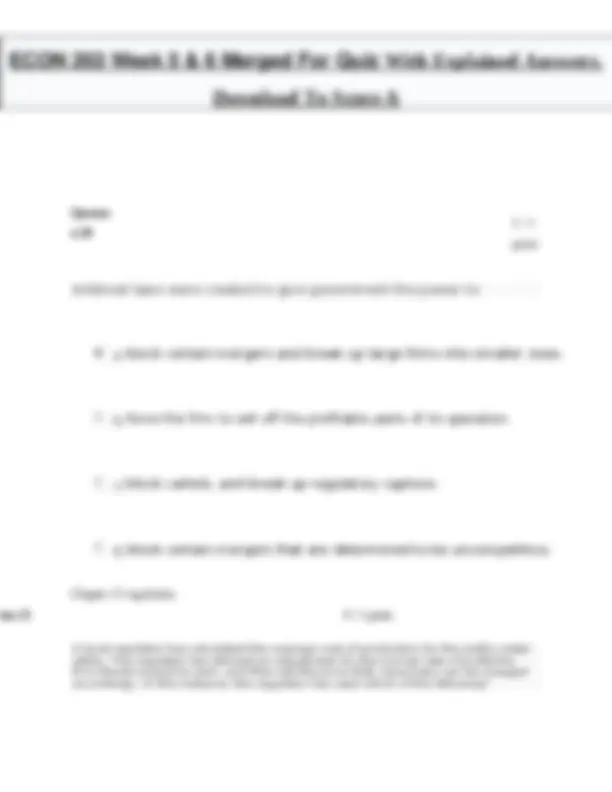
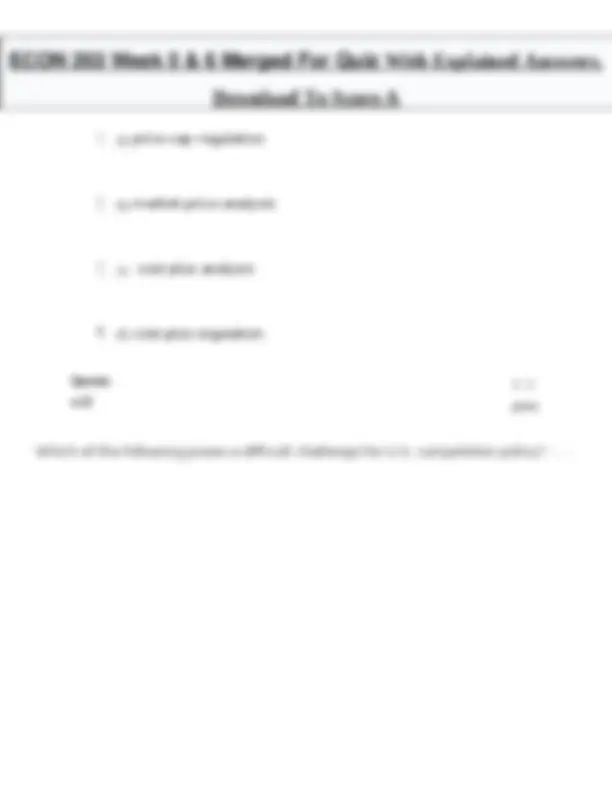
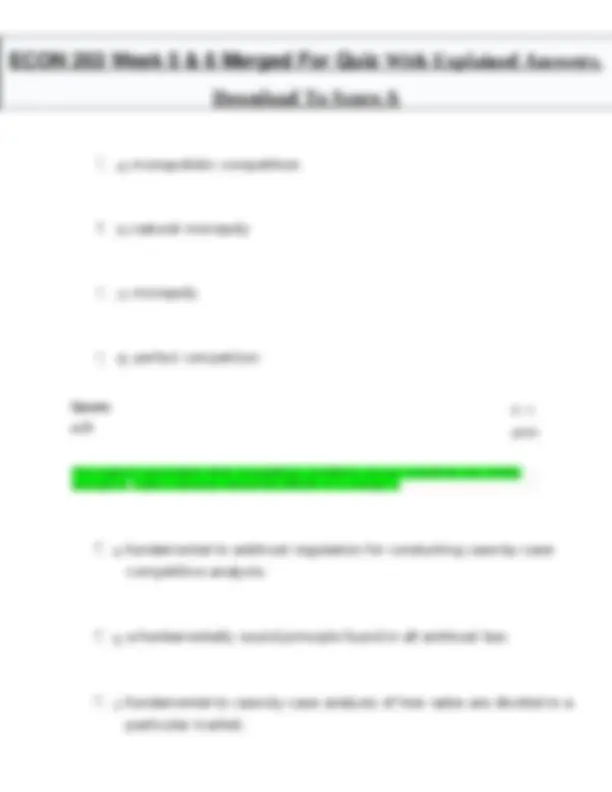
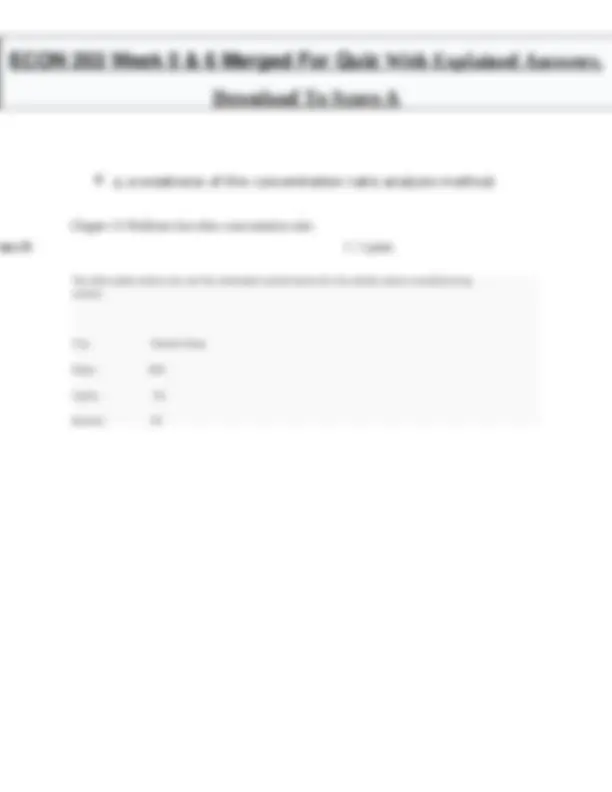
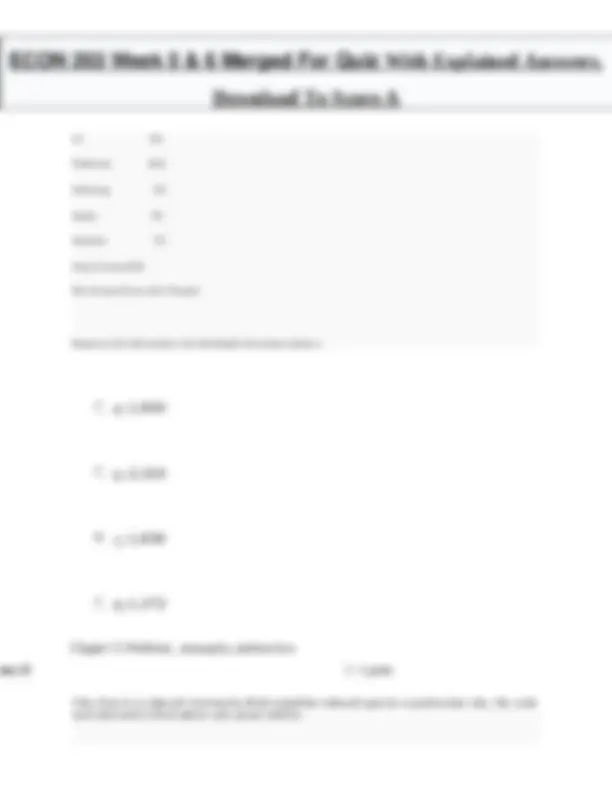
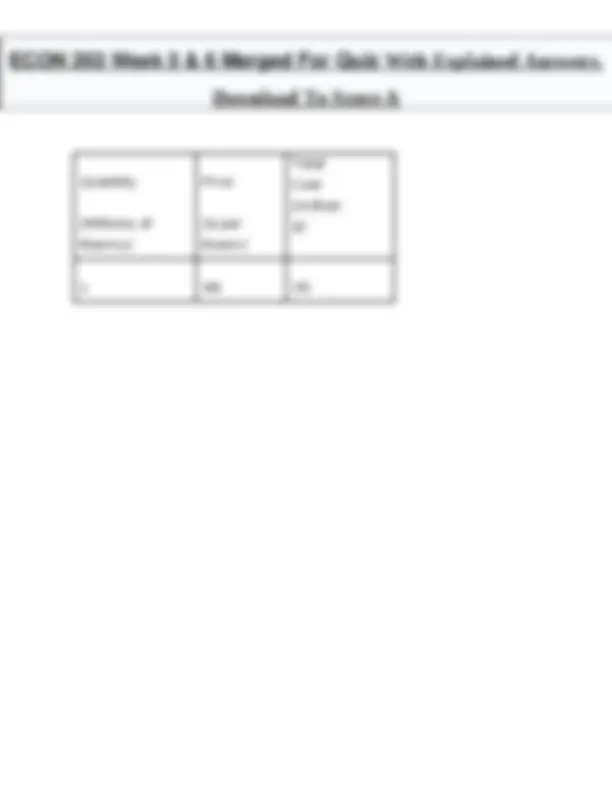
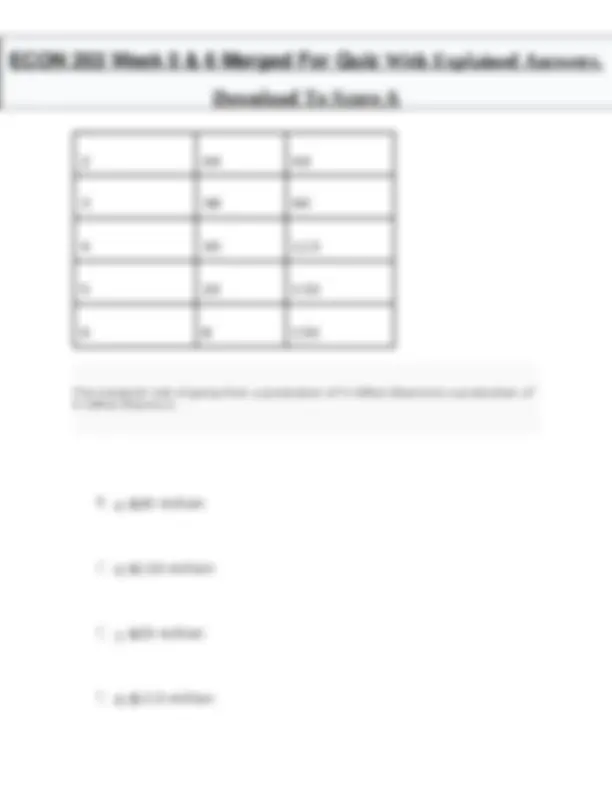
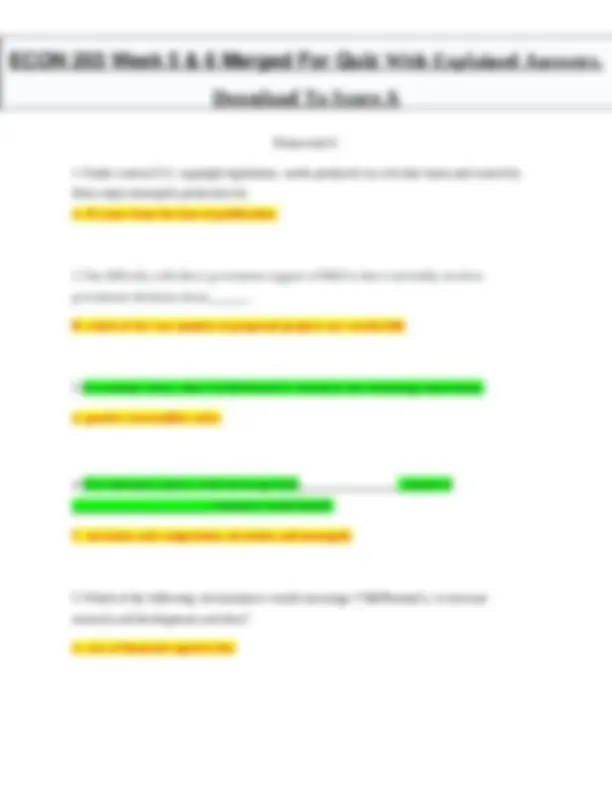
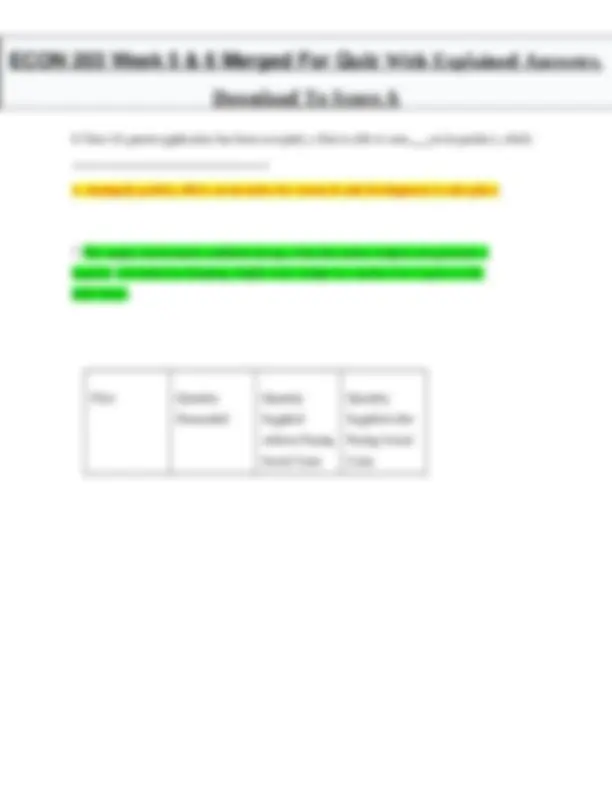
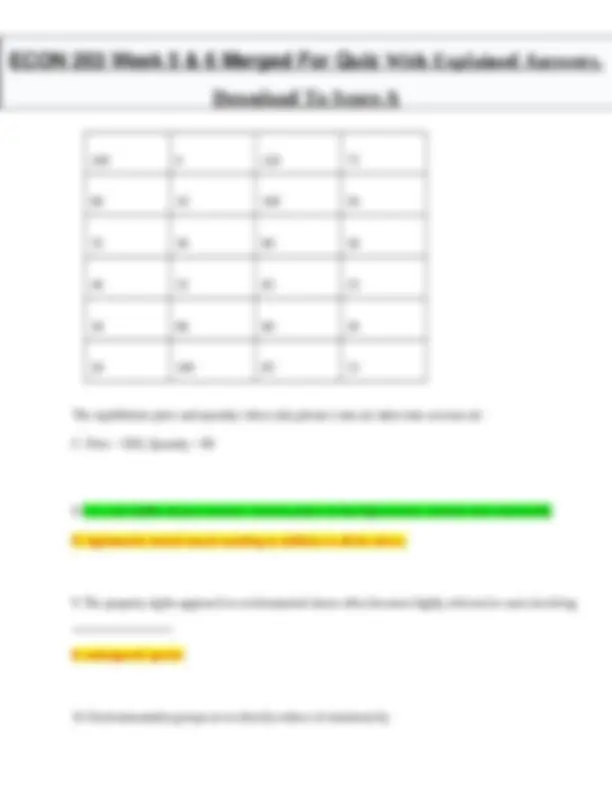
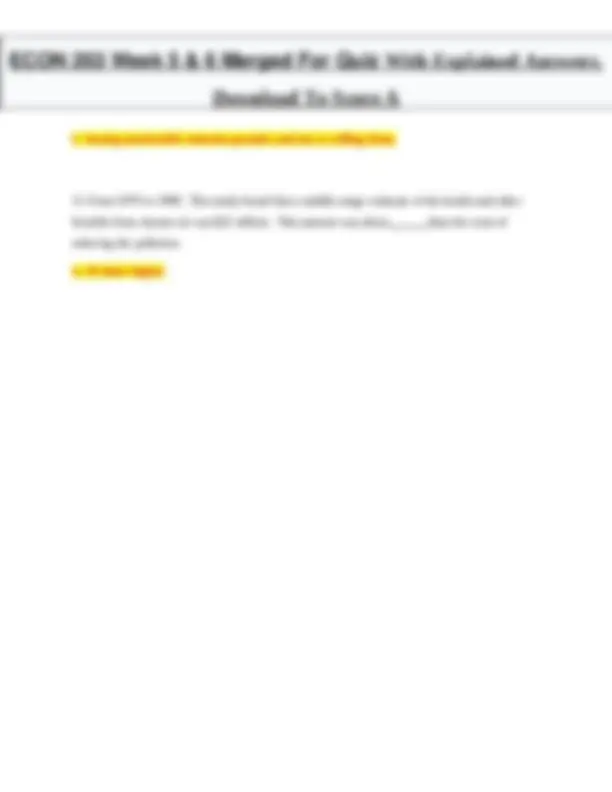
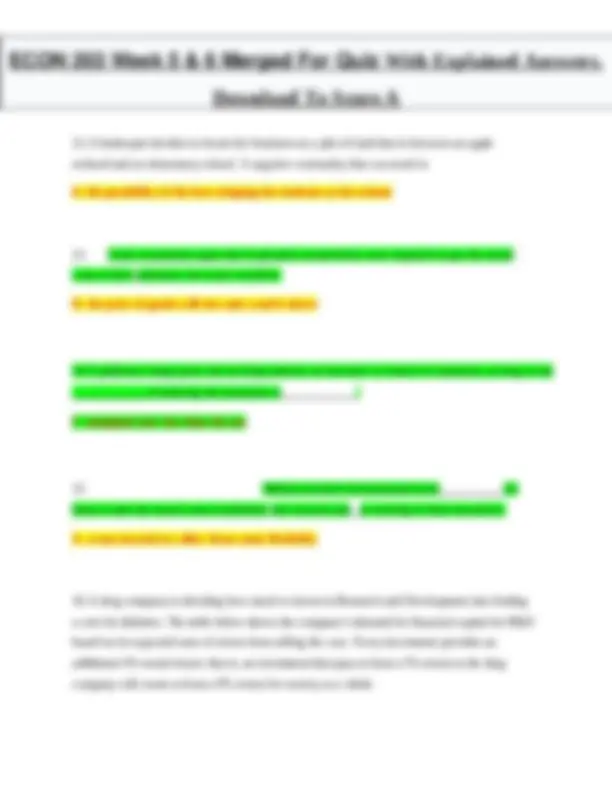
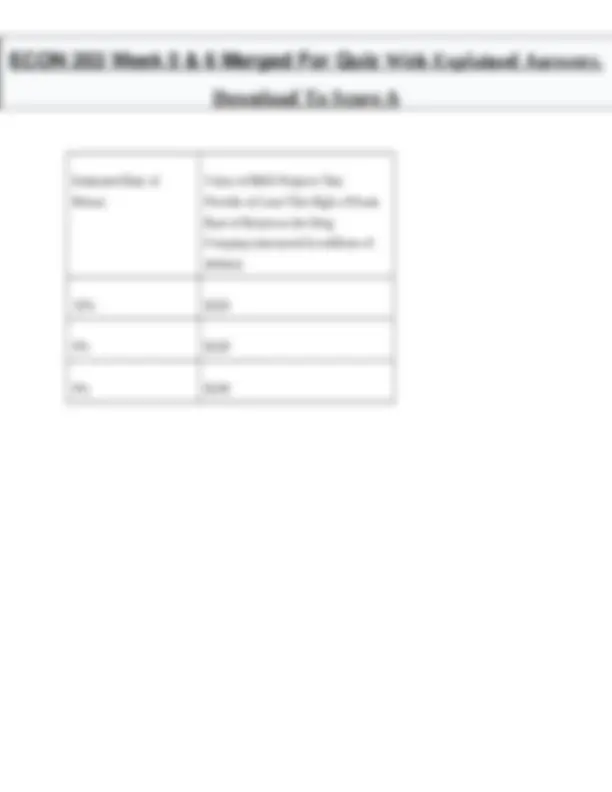
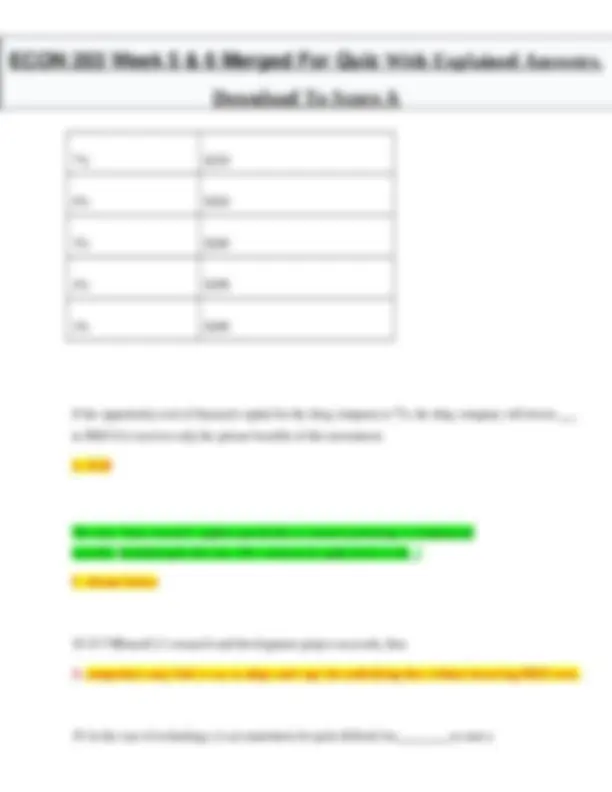
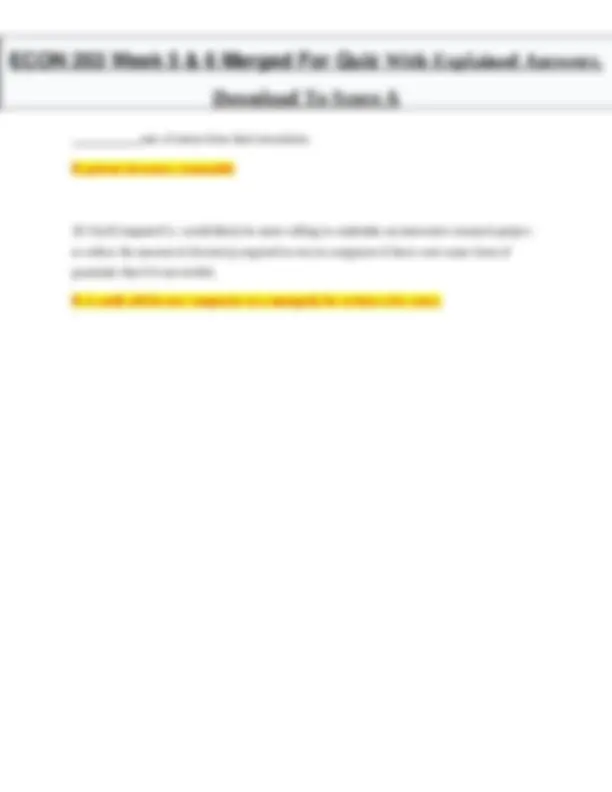
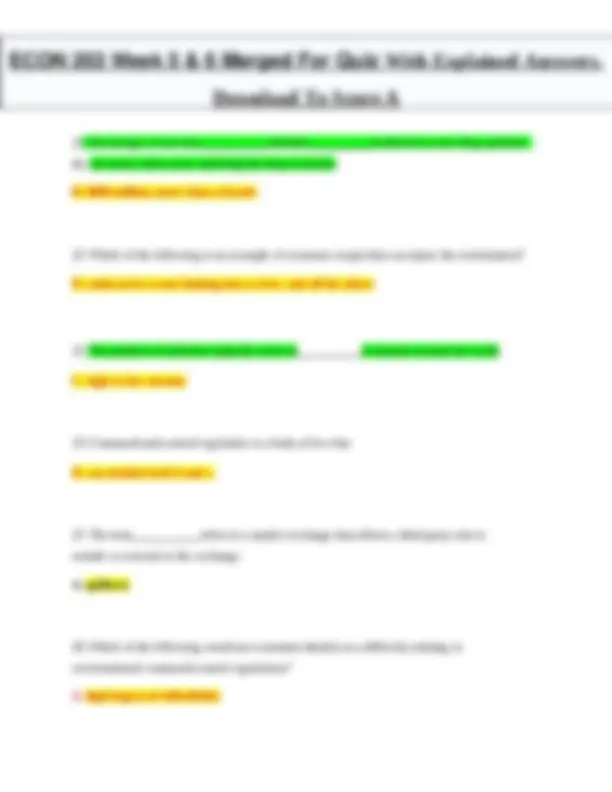
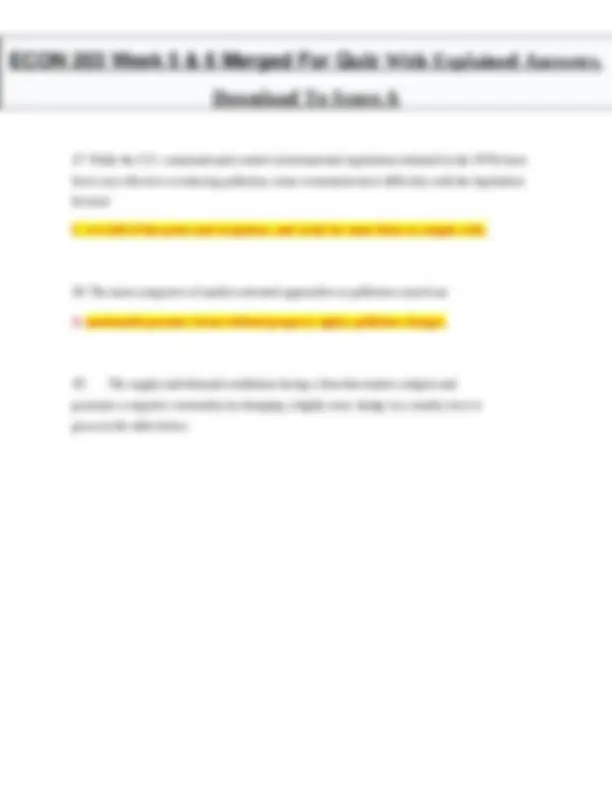
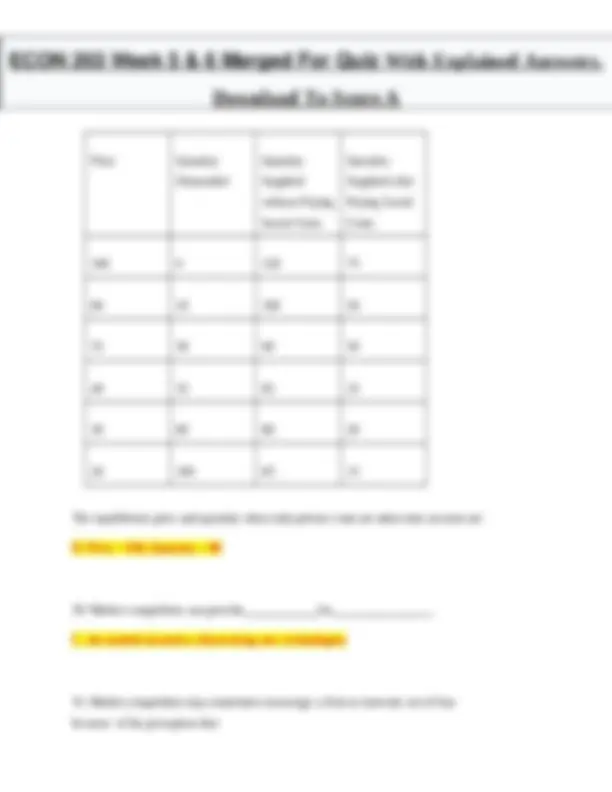
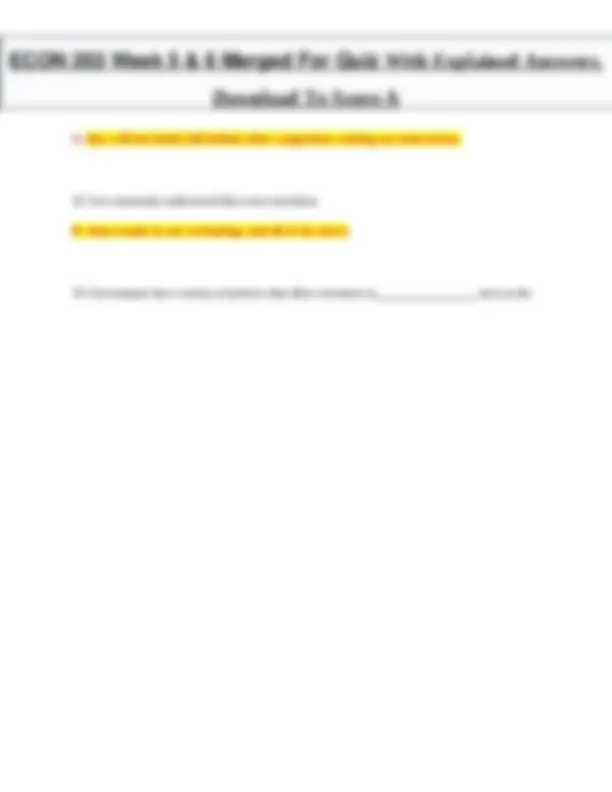
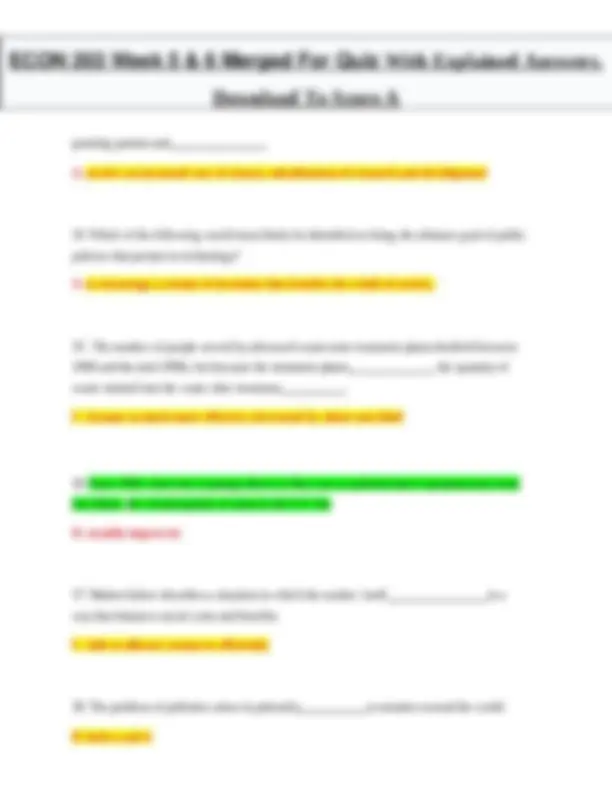
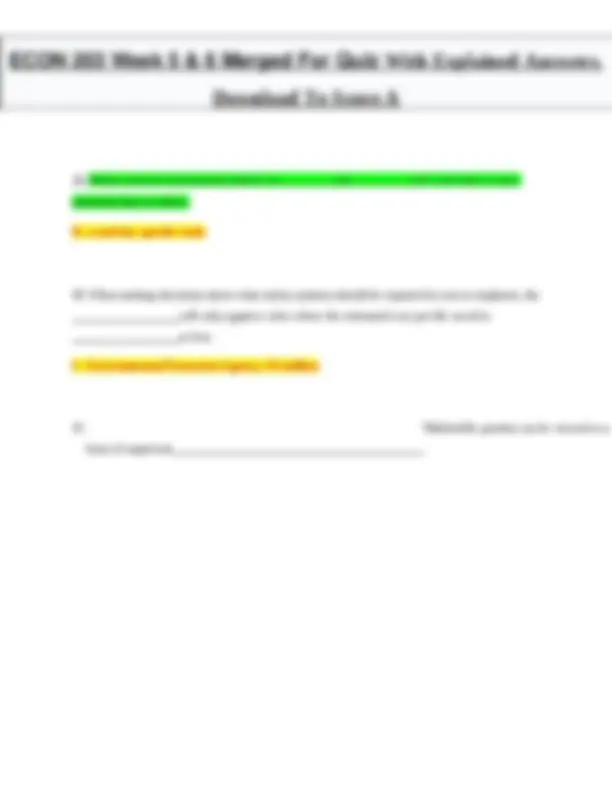
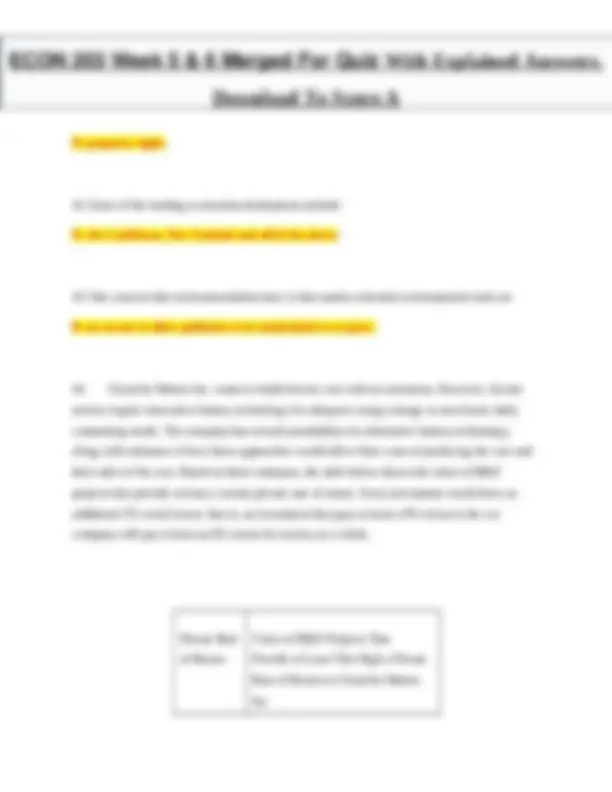
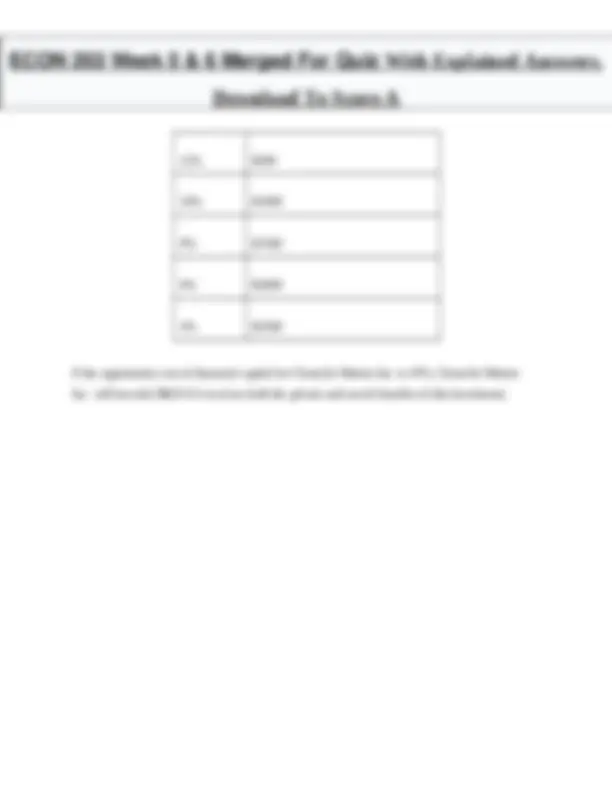
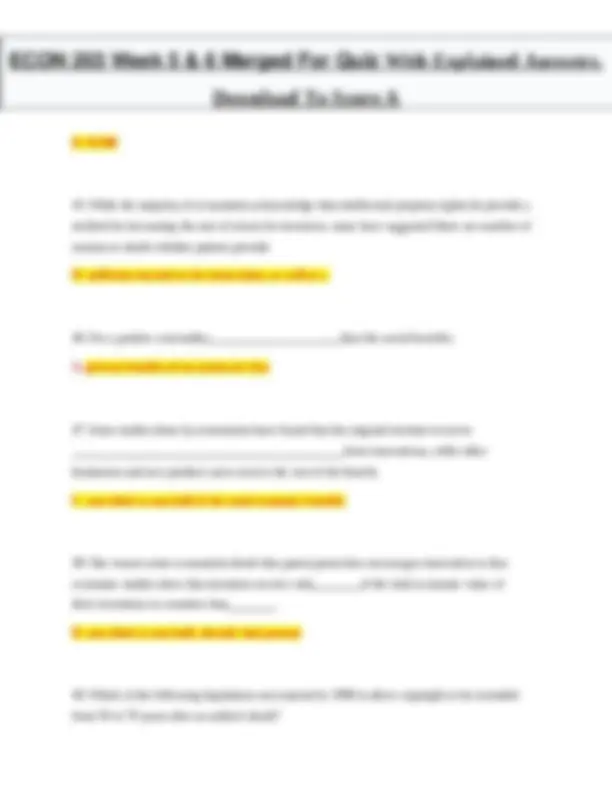
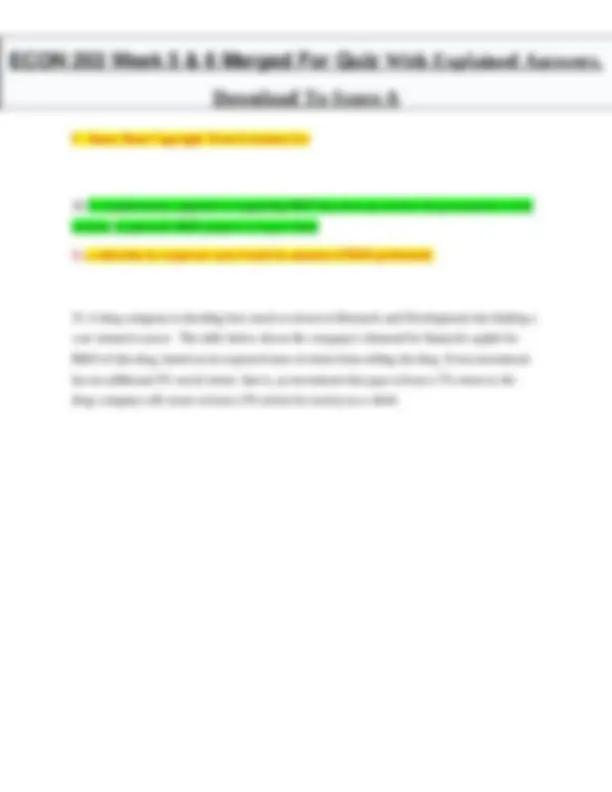
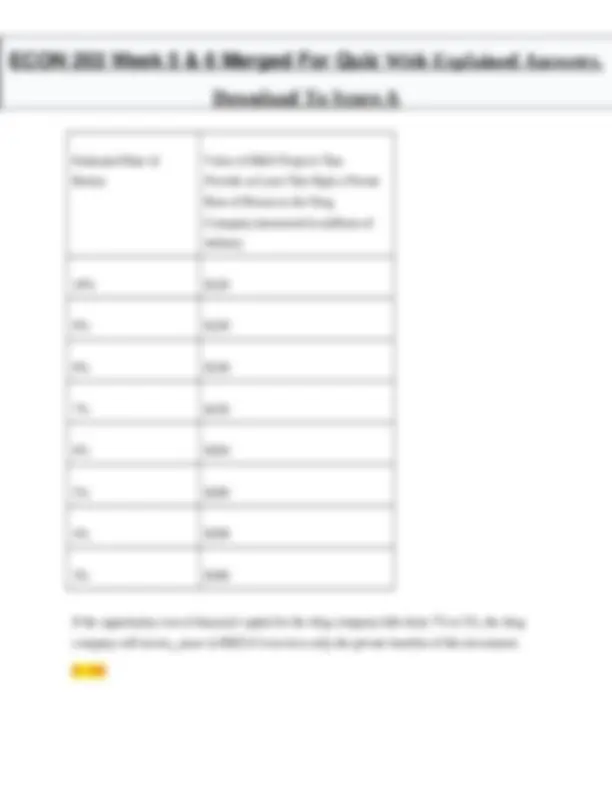


Study with the several resources on Docsity

Earn points by helping other students or get them with a premium plan


Prepare for your exams
Study with the several resources on Docsity

Earn points to download
Earn points by helping other students or get them with a premium plan
Community
Ask the community for help and clear up your study doubts
Discover the best universities in your country according to Docsity users
Free resources
Download our free guides on studying techniques, anxiety management strategies, and thesis advice from Docsity tutors
ECON 203 Week 5 & 6 Merged For Quiz With Explained Answers. Download To Score A
Typology: Quizzes
1 / 108

This page cannot be seen from the preview
Don't miss anything!





























































































1 / 1 point a) be^ socially^ responsible. b) be^ environmentally^ responsible. c) be^ perceived^ more^ favorably. d) differentiate^ their^ product. Questio n 2
point a) natural^ gas Monopolistic competitors in the food industry will often include a recyclable symbol on packaging used for their product as a means to Which of the following would be classified as a differentiated product produced by a monopolistic competitor?
b) Channel^ No.^5 c) tap^ water d) electricity Questio n 3
point Perfect competition and monopoly stand at of the spectrum of competition.
d) stays^ the^ same Questio n 5
point a) is^ steep. disregards competitors. b) The perceived demand for a monopolistic competitor
c) is^ flat. d) takes^ competitors^ into^ account. Questio n 6
point a) stays^ the^ same b) will^ expand c) will^ decline^ in^ the^ short^ run d) will^ decline Chapter 10 costs ion 7 1 / 1 point A monopolistically competitive firm may earn abnormally high profits in the If a monopoly or a monopolistic competitor raises their prices, the quantity demanded .
n 8 point a) determine^ what^ price^ to^ charge^ for^ the^ product b) determine^ total^ revenue,^ total^ cost,^ and^ profit c) determine average costs, total^ revenue,^ and^ profit d) select^ the^ profit^ maximizing^ quantity^ to^ produce Chapter 10 the social benefits ion 9 0 / 1 point A monopolistically competitive industry does not display in either the short-run, when firms are making , nor in the long-run, when firms are earning . a) productive^ and^ allocative^ efficiency;^ profits^ and^ losses;^ negative^ profits The first step to be undertaken by a profit-maximizing monopolistic competitor wanting to decide what price to charge is to
b) allocative^ efficiency;^ profits^ and^ losses;^ negative^ profits c) productive^ and^ allocative^ efficiency;^ profits^ and^ losses;^ zero^ profits d) productive^ efficiency;^ profits^ and^ losses;^ zero^ profits Questio n 10
point a) they will both improve their industrial position. If each of two competing monopolists undertakes equal advertising efforts to attract consumers away from the other, the total result is
d) engage in free market activities Questio n 12
point If one firm operating in an oligopoly raises its price and other firms do not do so, a) the^ egos^ of^ all^ the^ top^ executives^ will^ eventually^ lead^ to^ cooperation^ at that higher price. b) the^ sales^ of^ the^ firm^ that^ increased^ its^ price^ will^ decline^ sharply.
c) the firm^ with^ the increased price^ will^ have^ its^ higher^ profits sustained through cooperation. d) the^ sales^ of^ the^ firm^ with^ the^ higher^ price^ will^ decline^ slightly. Chapter 10 Problems maximize profits ion 13 1 / 1 point Pri c e Quant it y
$10 0 $ 0 $9 200 $1, 0 0 $8 400 $1, 0 0 $7 600 $2,
The following table shows the demand curve and cost information for a firm that is a monopoly.
b) 600 units c) 400 units d) 800 units Chapter 10 Problems_ firm's profits ion 14 1 / 1 point Quantit y Price ($) Total Reven ue ($) Margin al Reven u e ($) Total Cost ($) Margina l Cost ($) Avera ge Cost($ ) 0 25 0 25 30 — — A monopolistic competitor has the following information about cost and demand.
a) cost-plus^ regulation. b) regulatory^ capture. c) profit regulation.
d) price^ cap^ regulations. Questio n 16
point a) regulated^ practices b) legal^ practices c) competitive^ practices d) restrictive^ practices Questio n 17
point Practices that reduce competition without actual documented agreements between firms to raise price are commonly referred to as.
d) price^ cap^ regulation. Chapter 11 antitrust law ion 18 0 / 1 point The main challenge for antitrust regulators is a) to promote the concept of a market-oriented economy. b) to^ determine^ when^ a merger^ may^ hinder^ competition. c) to^ facilitate^ privatization^ of^ government^ assets. d) to^ figure^ out^ how^ to^ best^ benefit^ consumers. Questio n 19
point a) would not be considered particularly low. If the largest four firms in an industry control less than half the market, their competitive concentration ratio
b) would^ not be^ considered^ particularly^ high c) would be considered to be especially high. would be considered to be especially low. d) Questio n 20
point